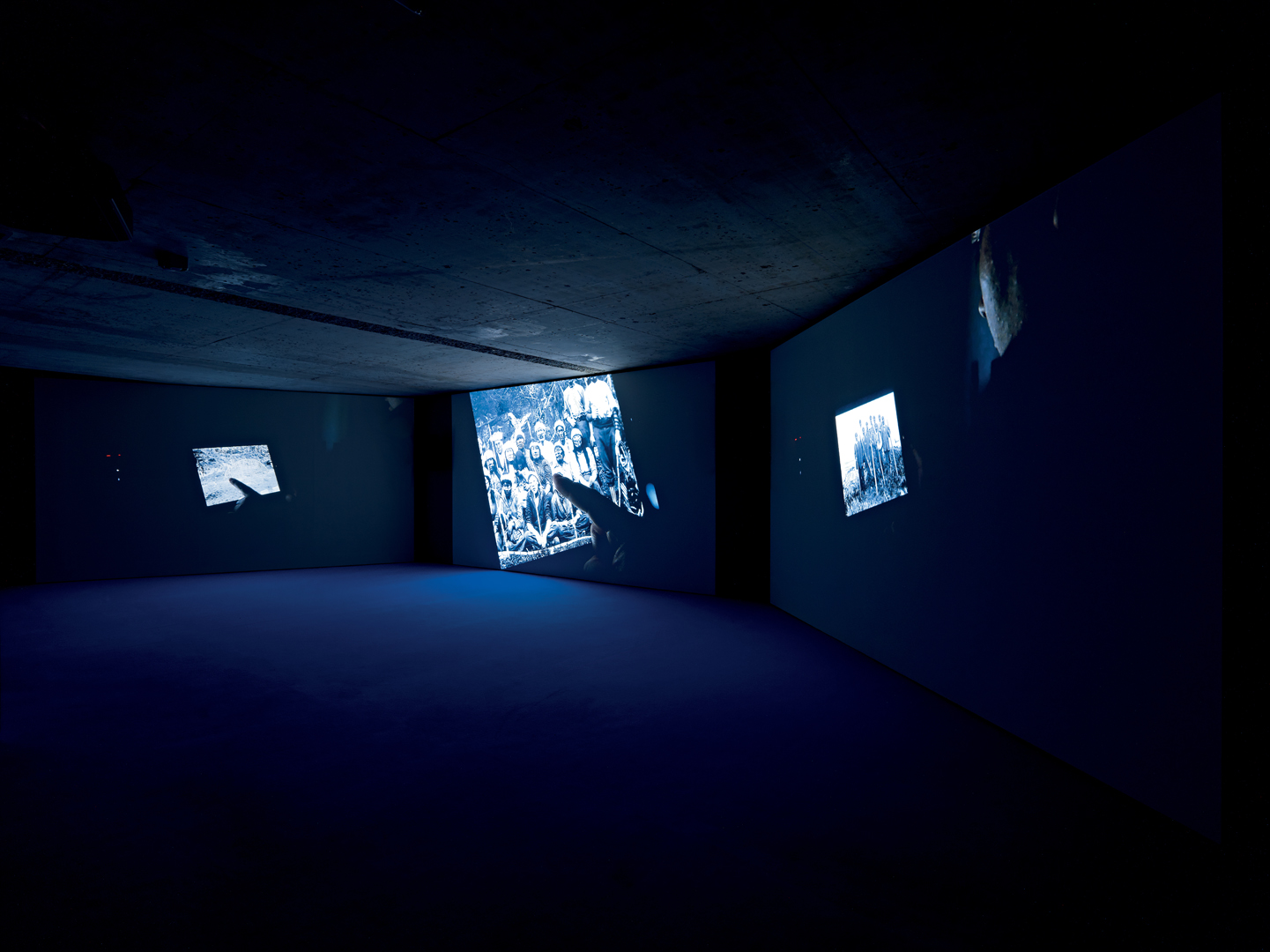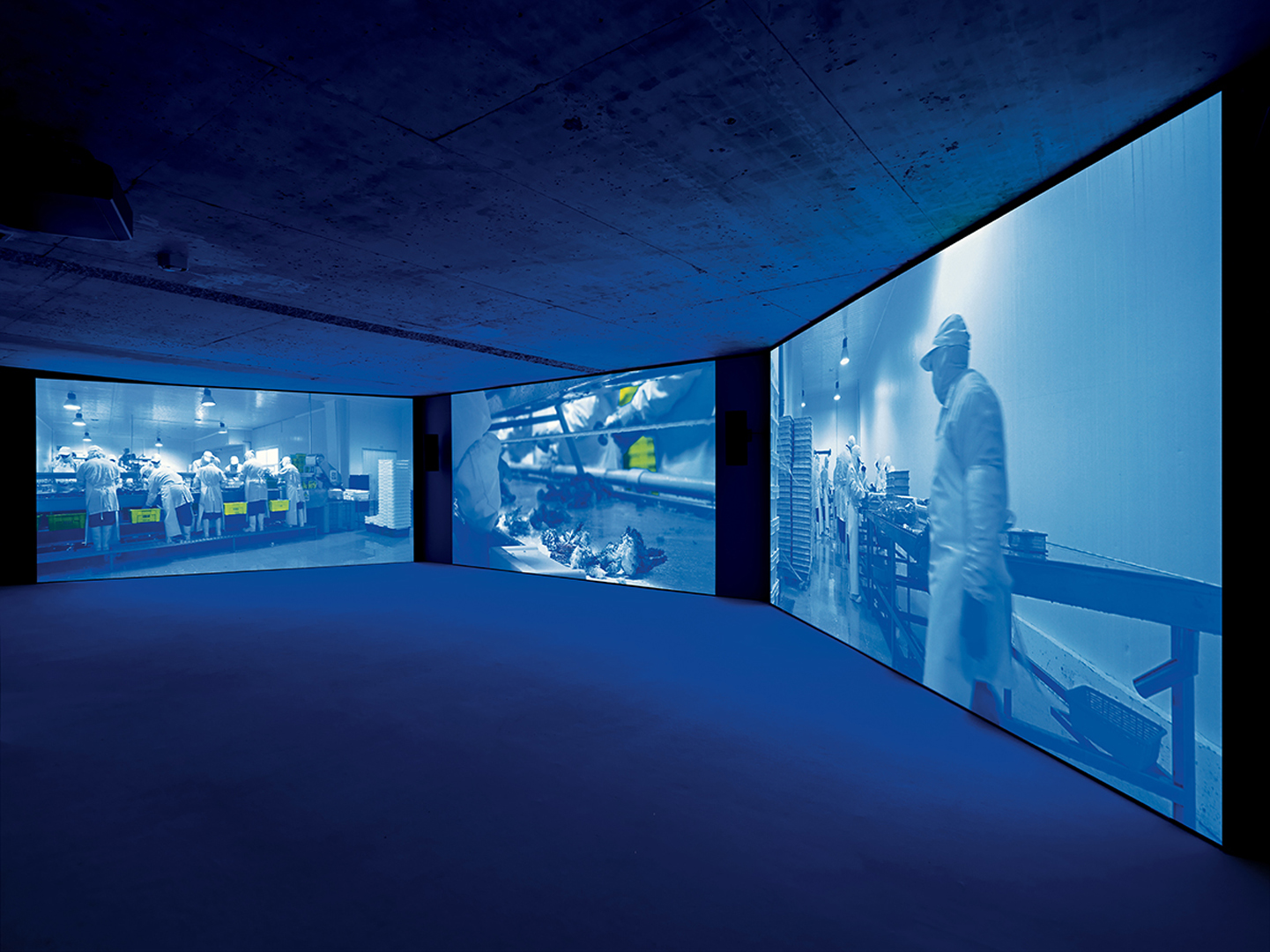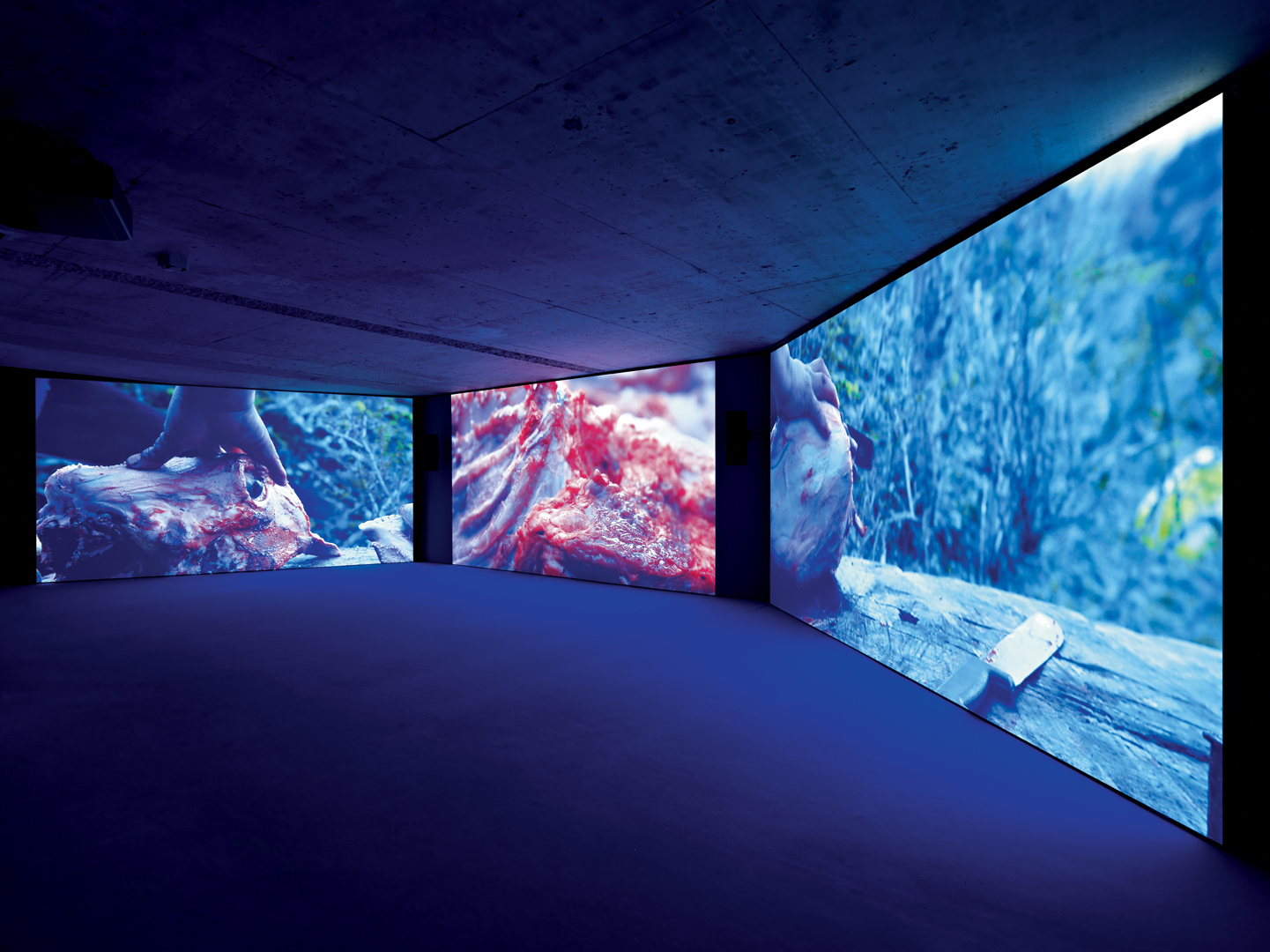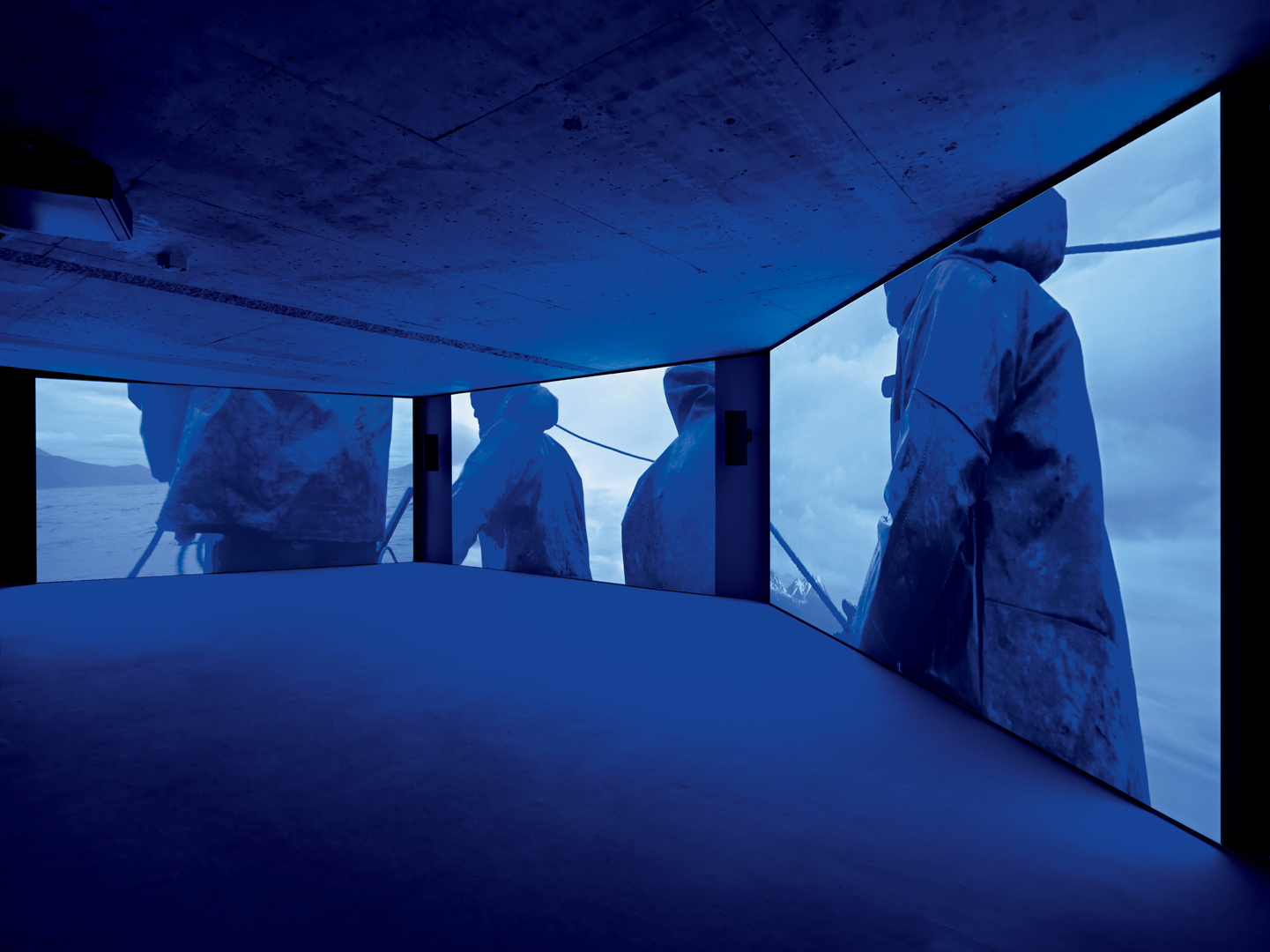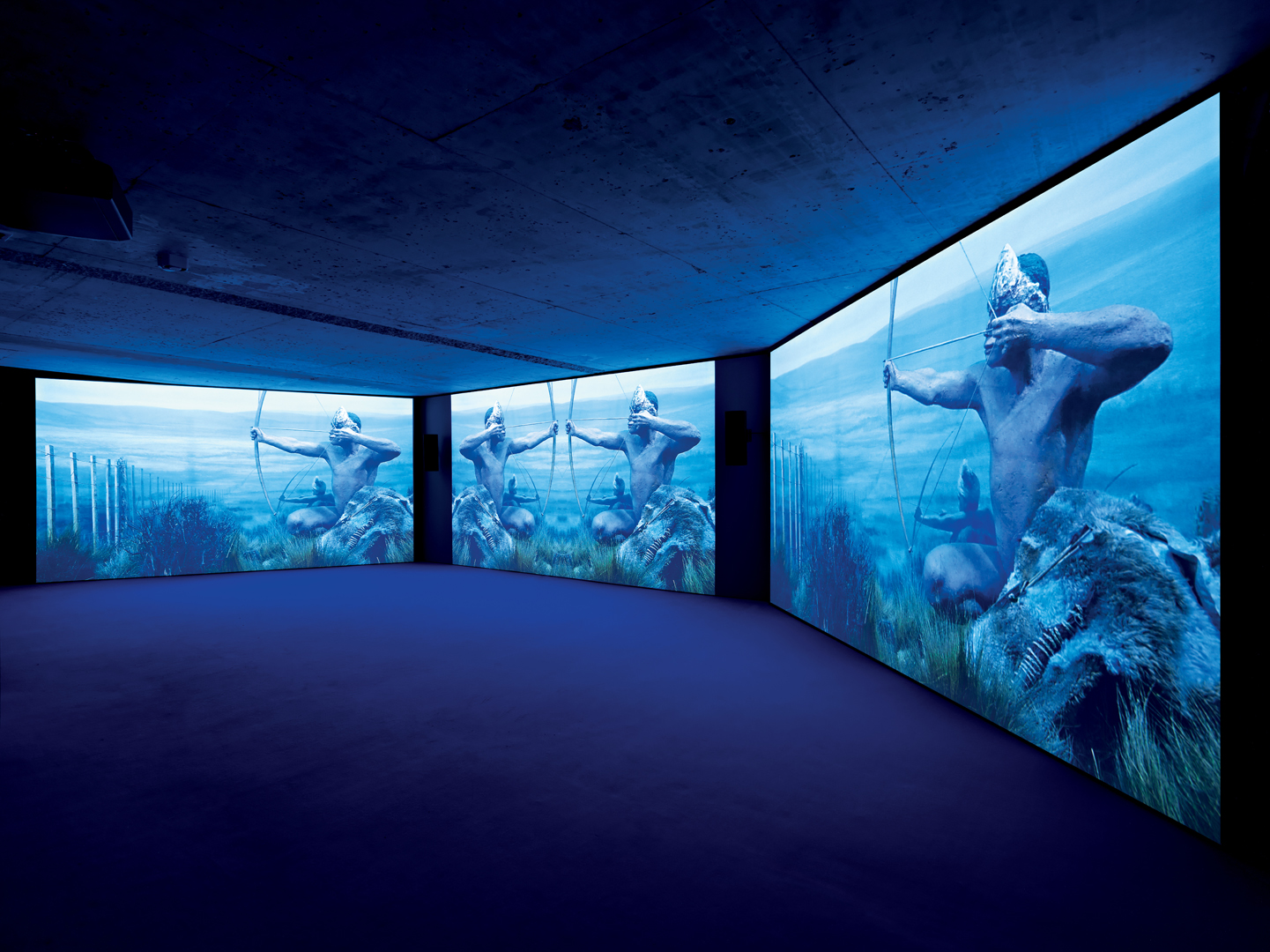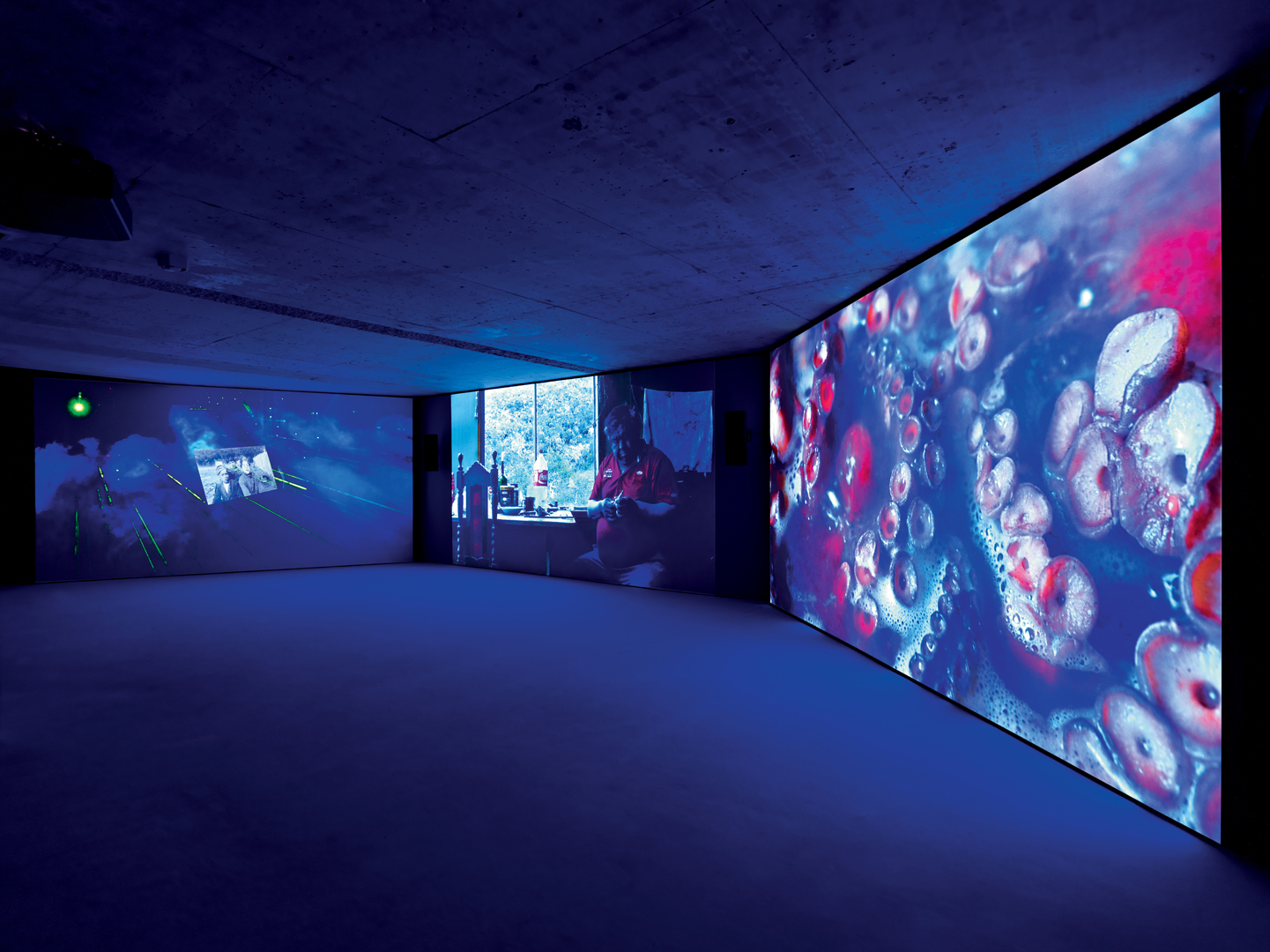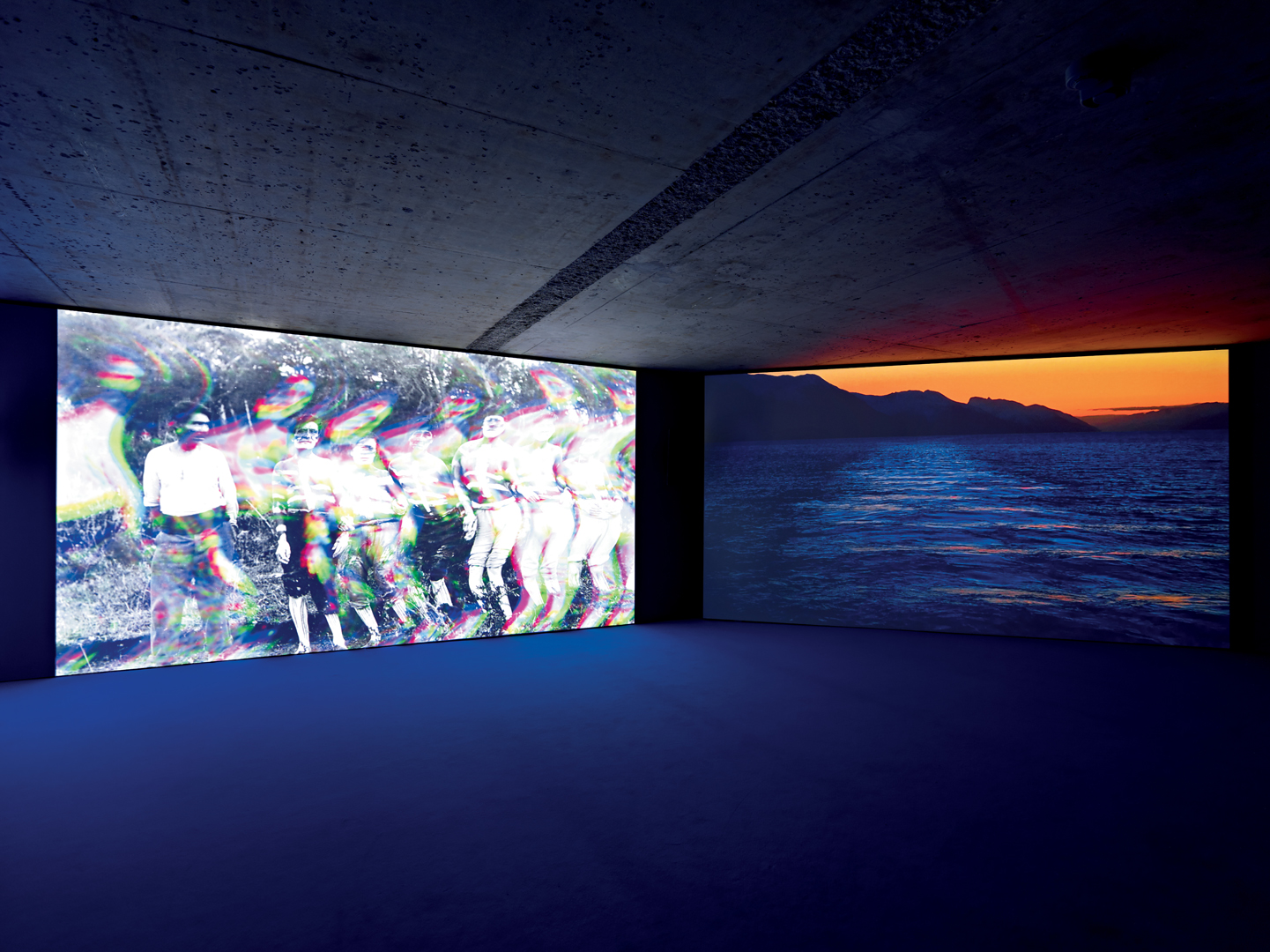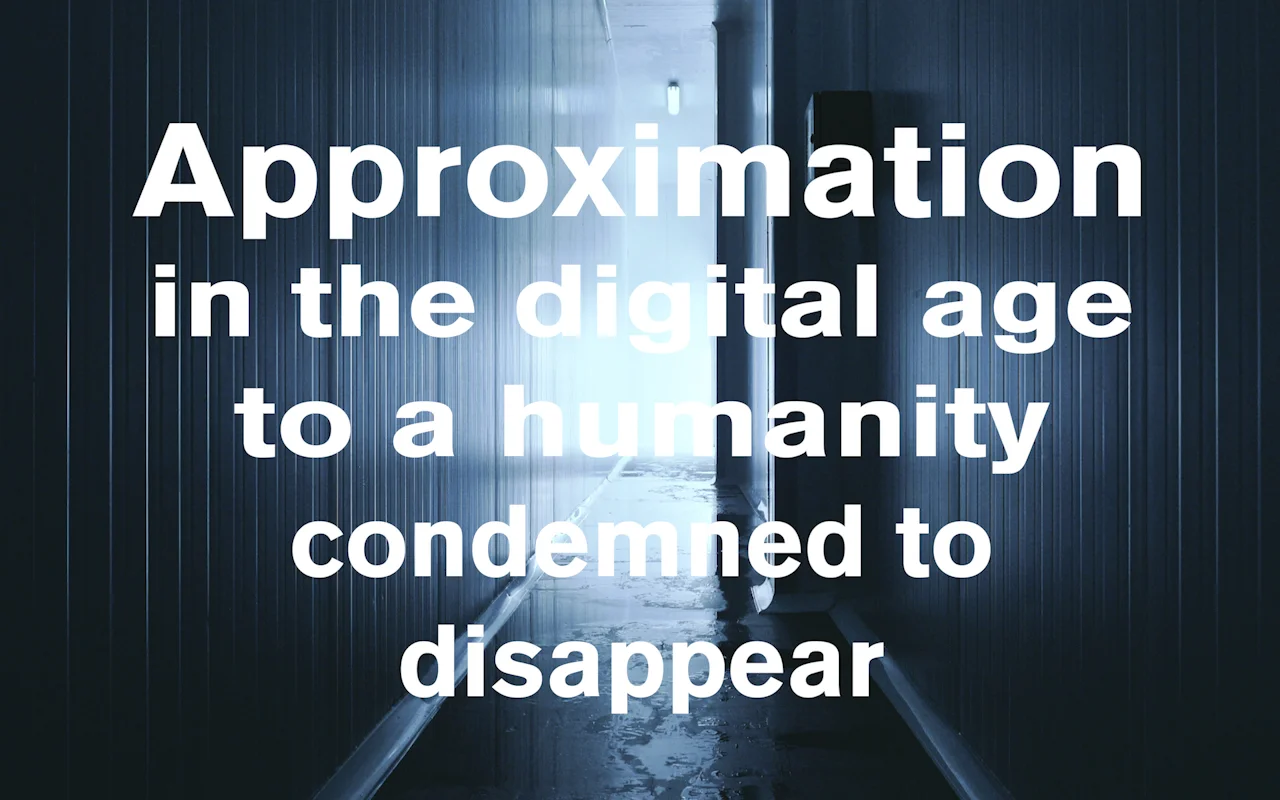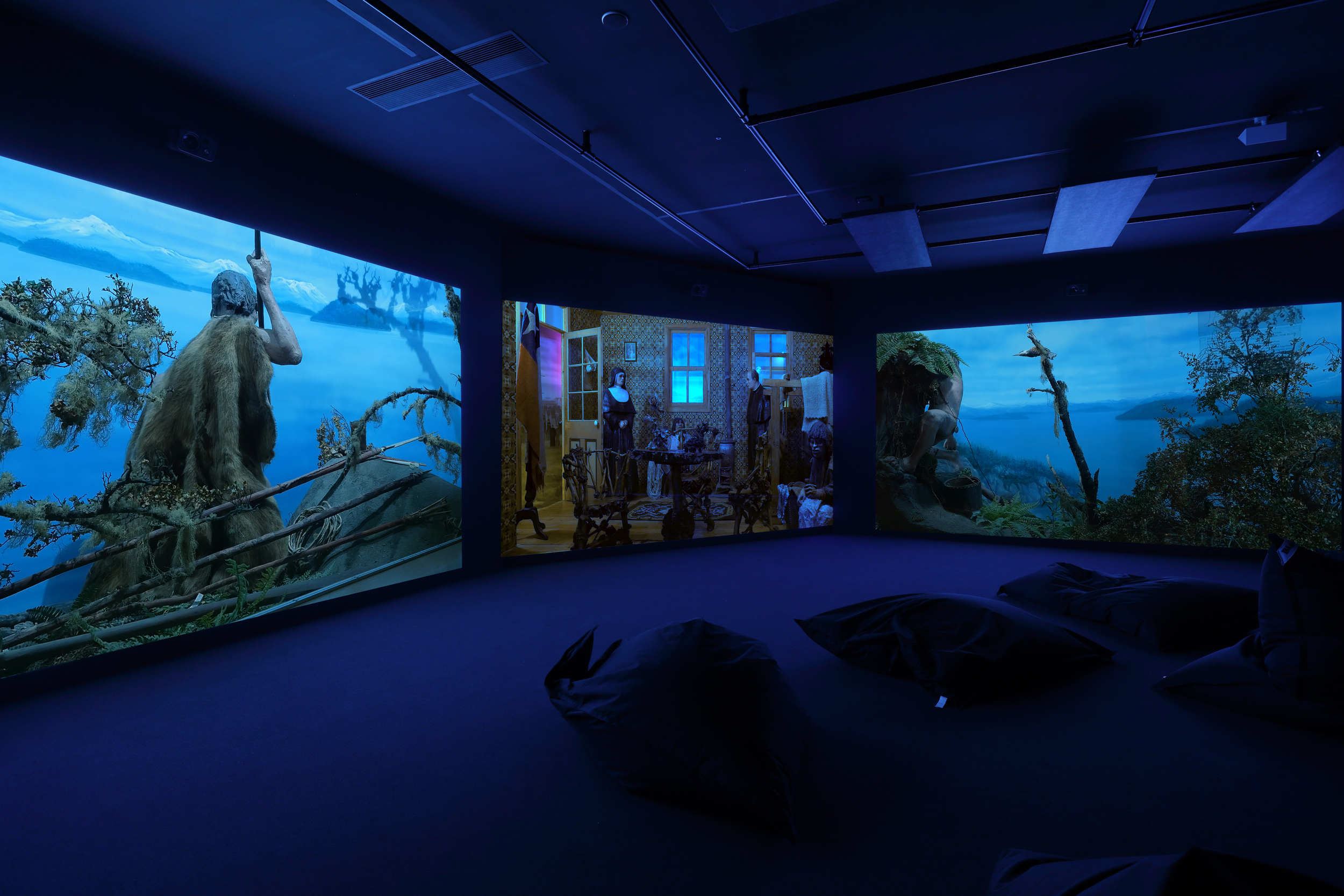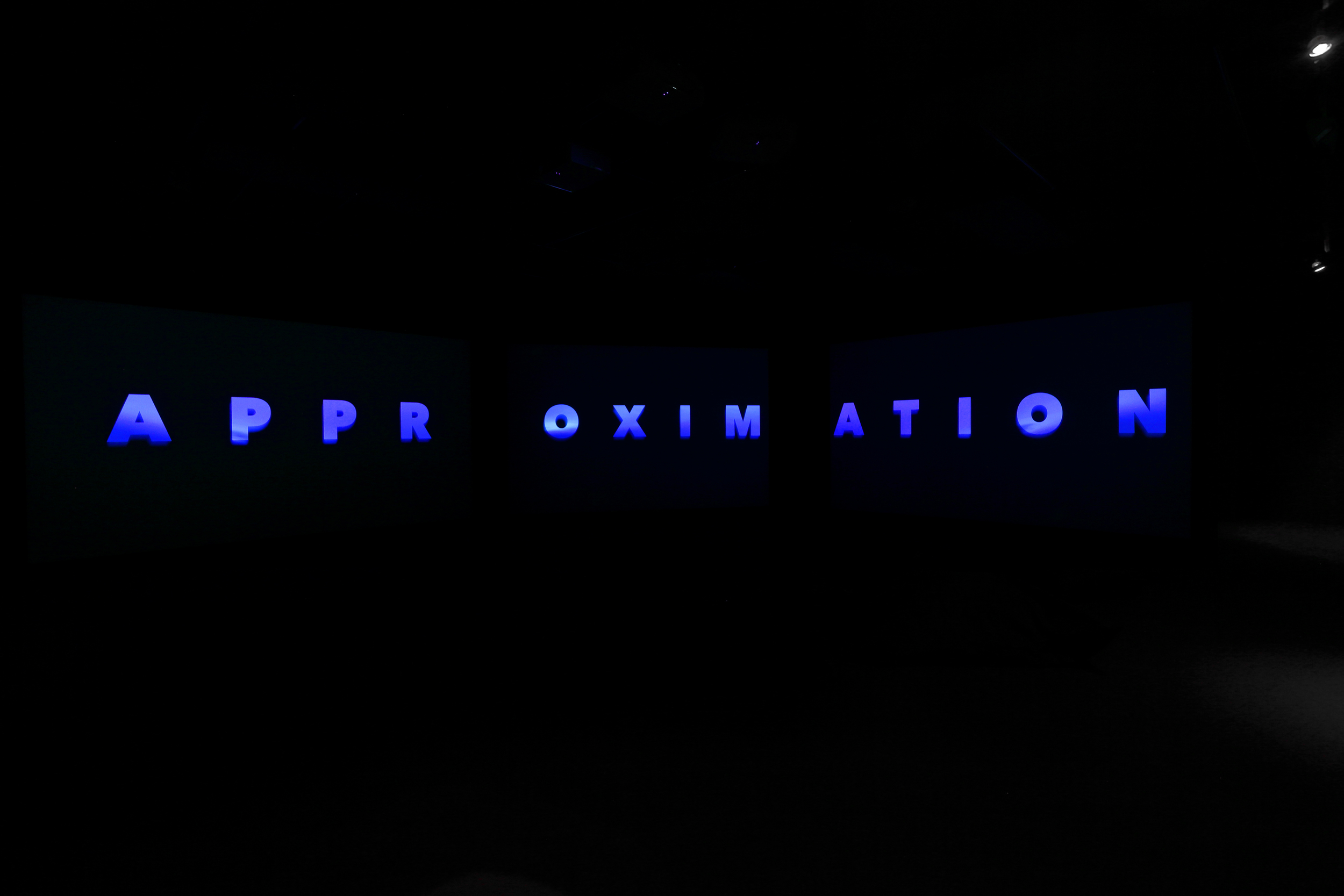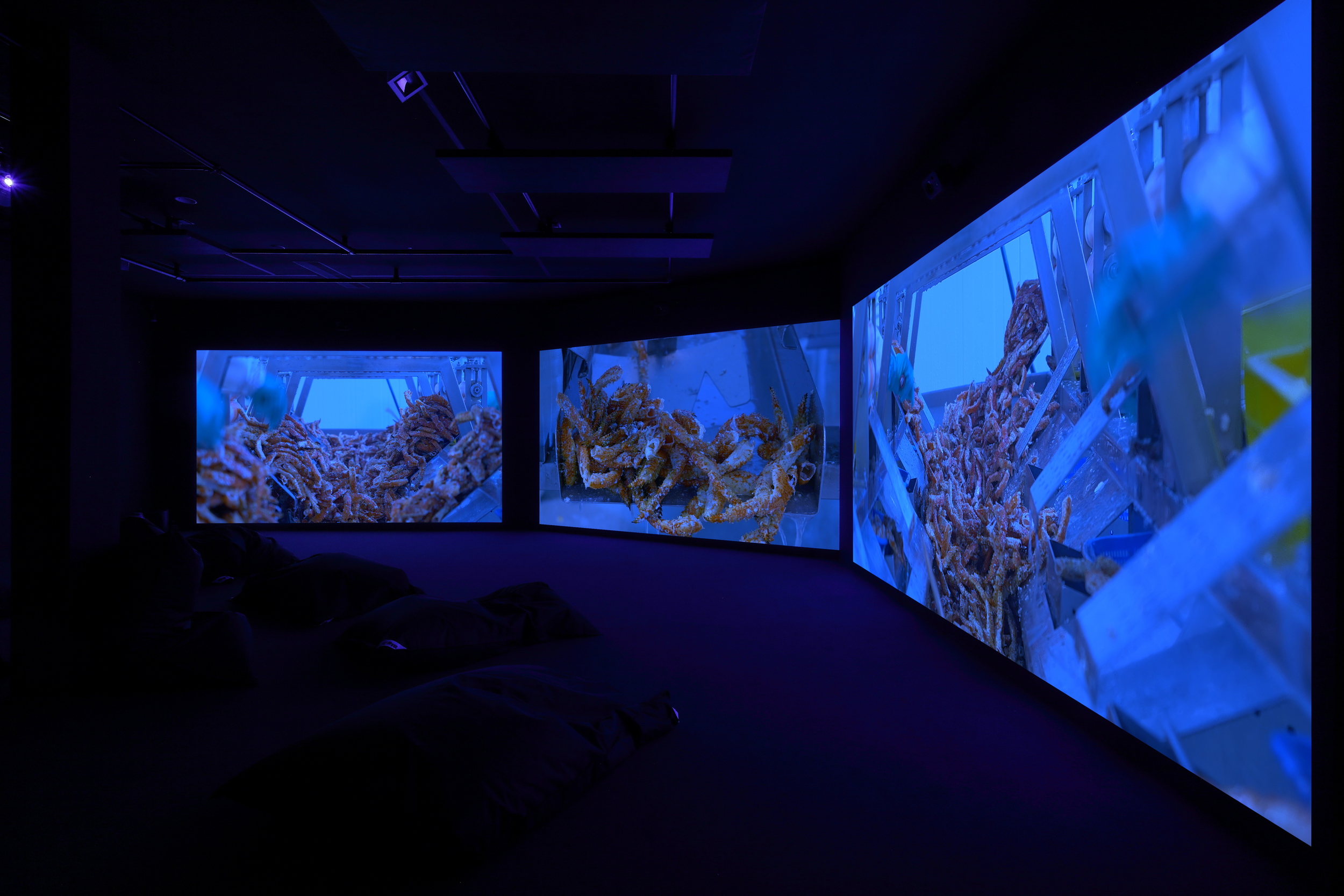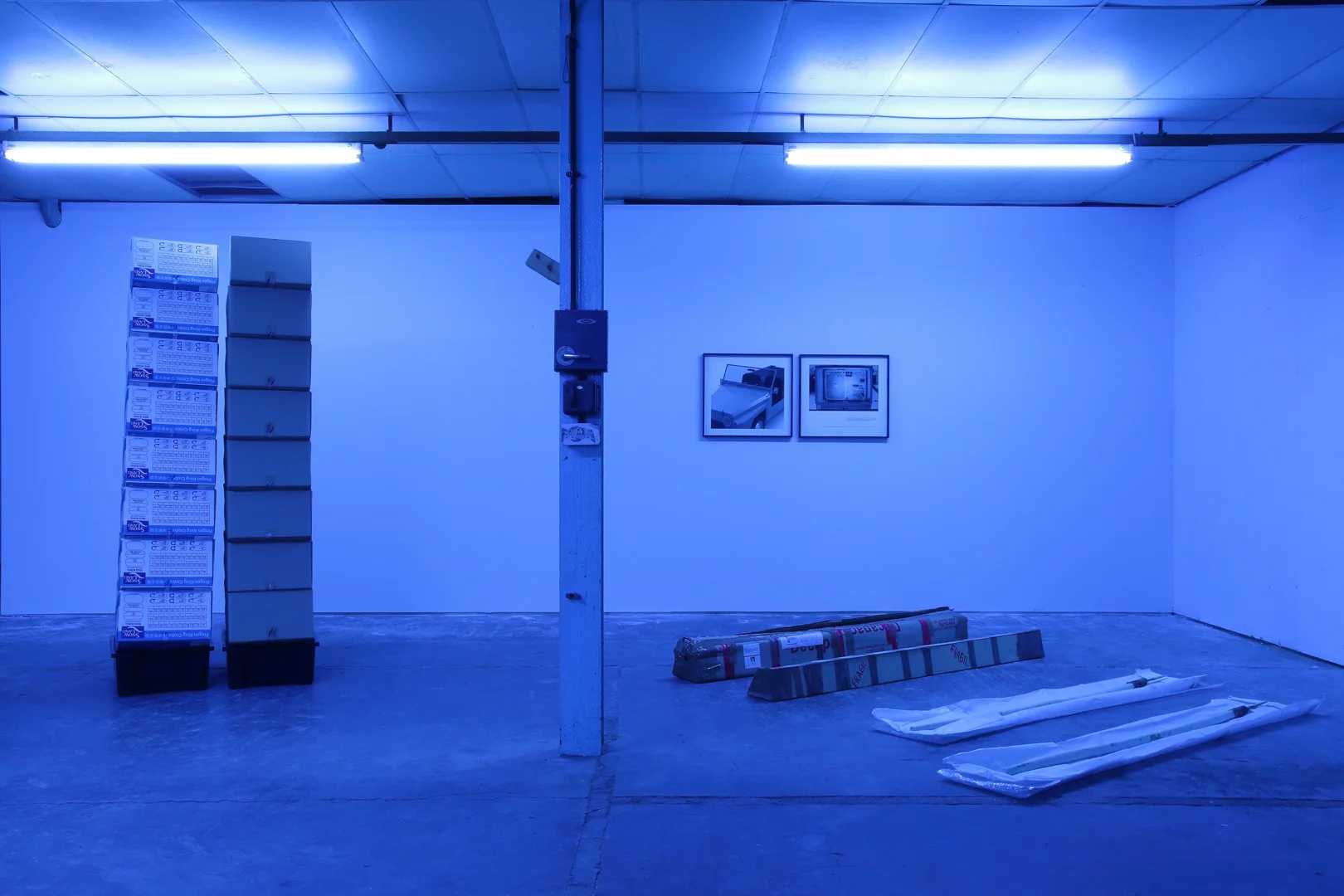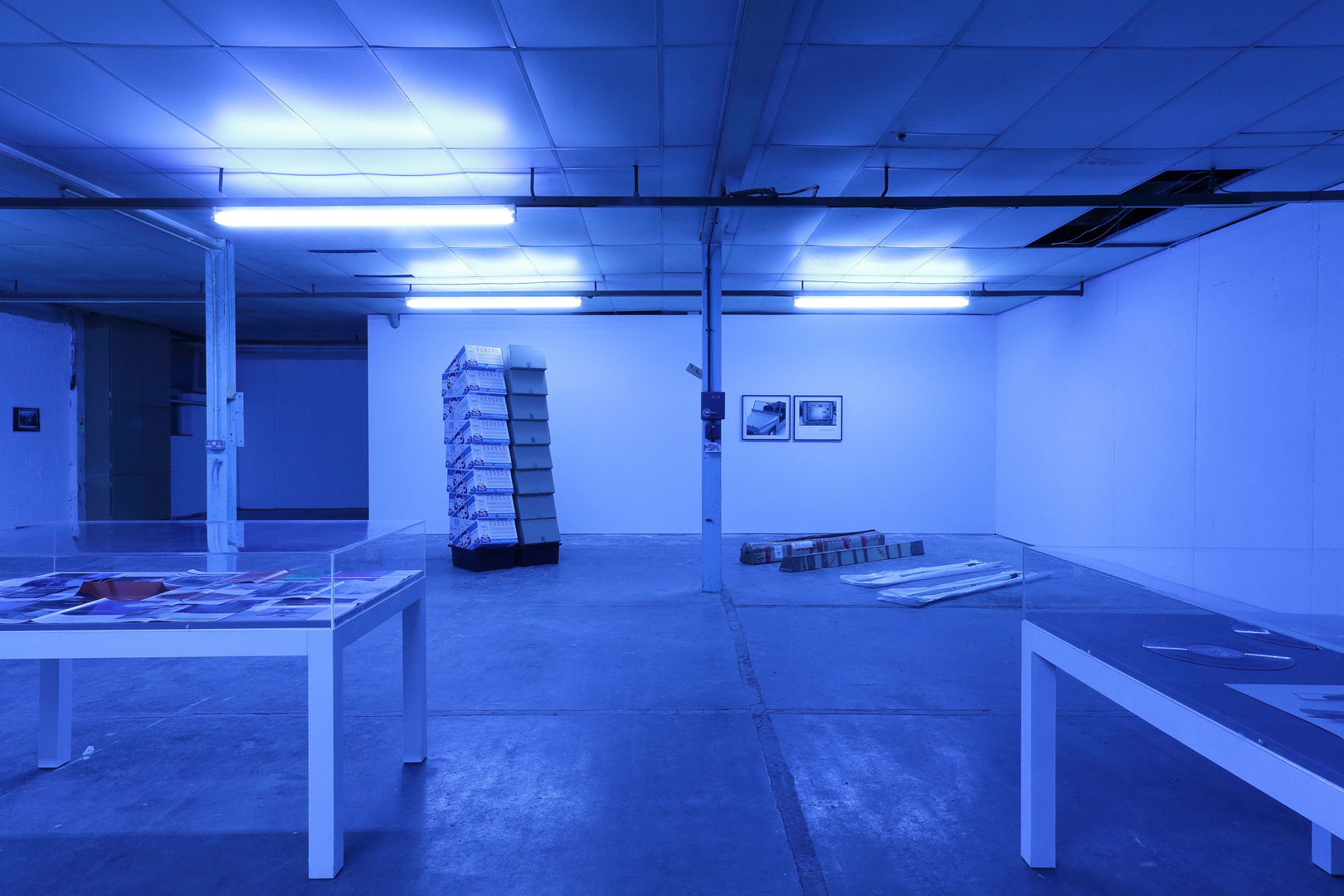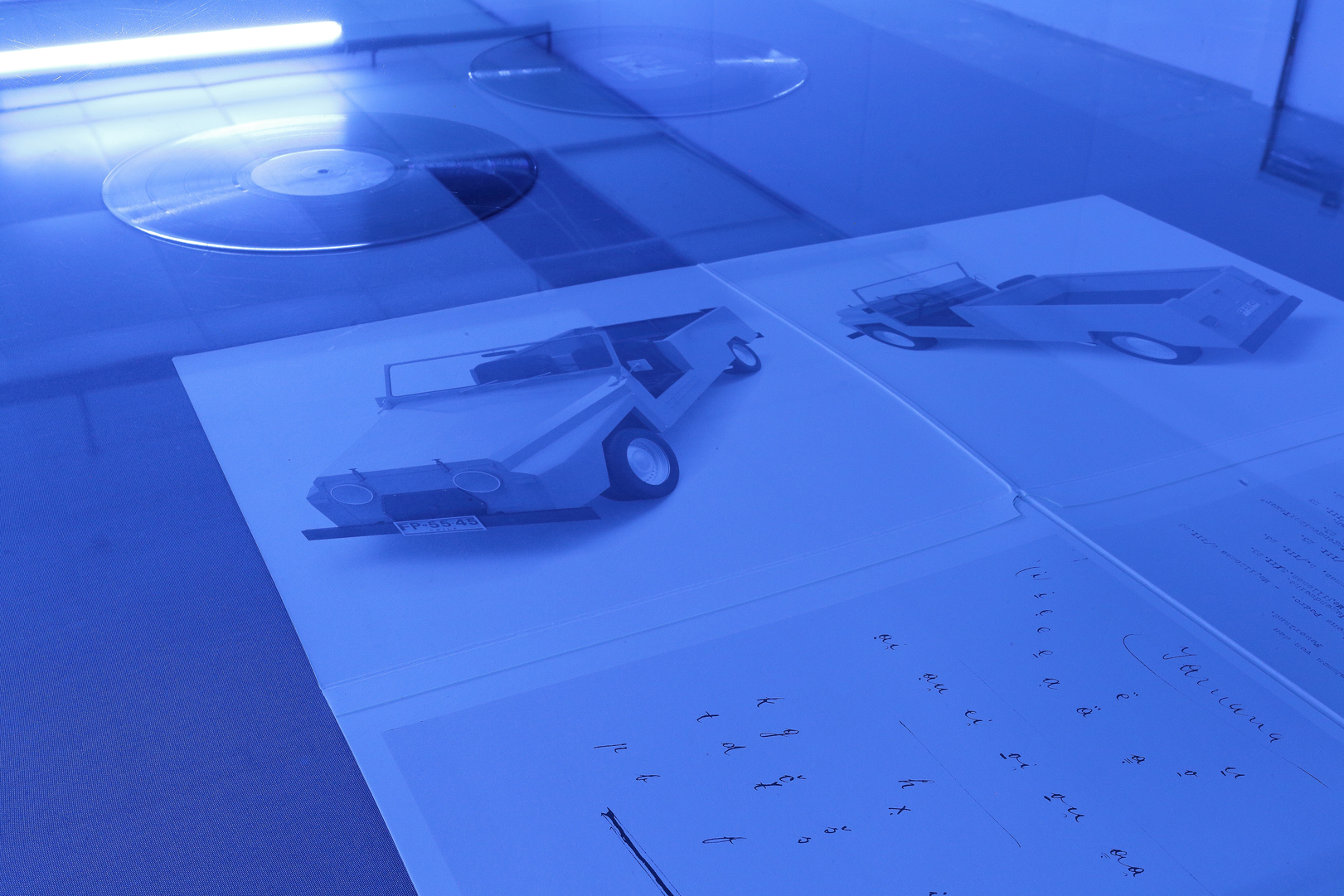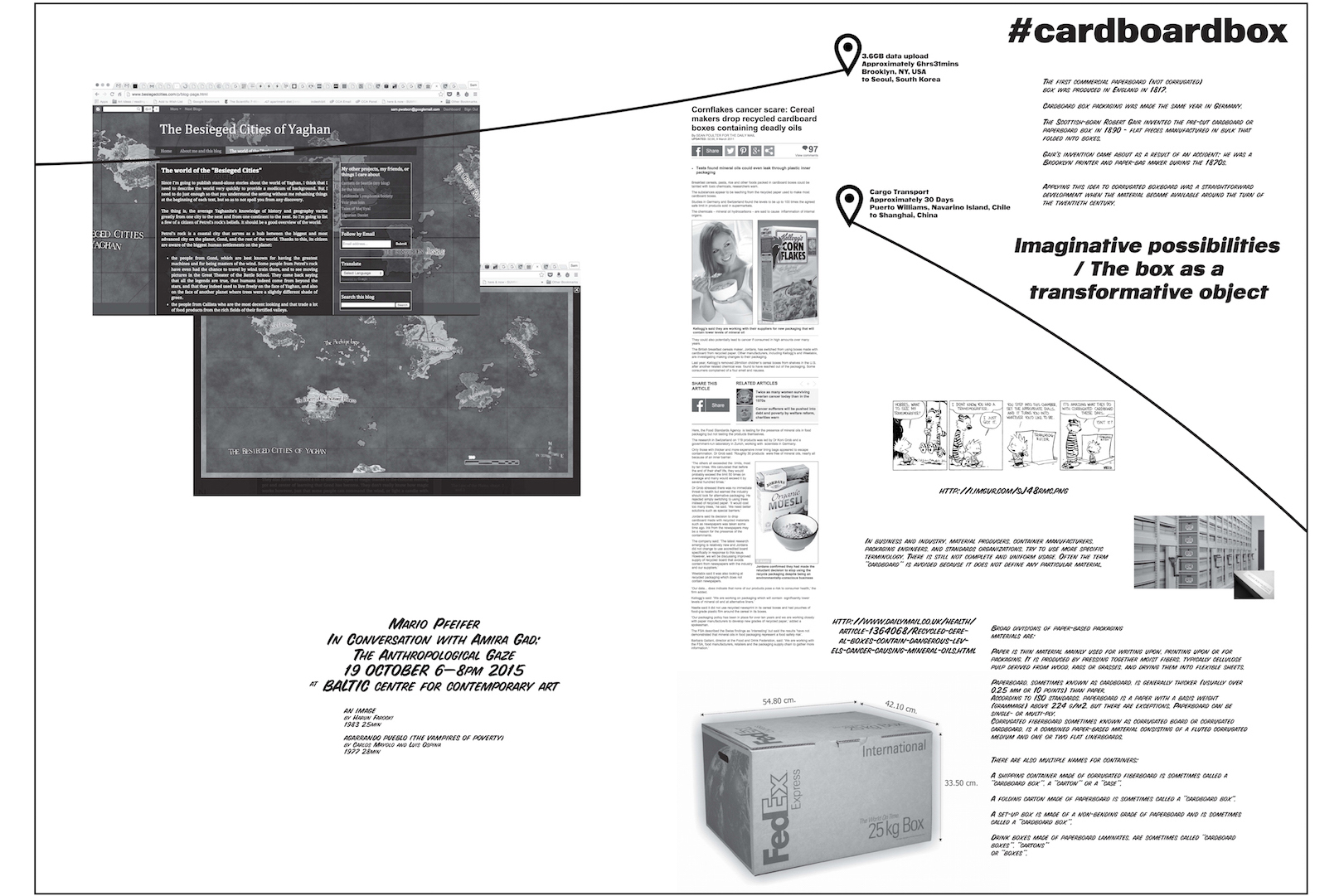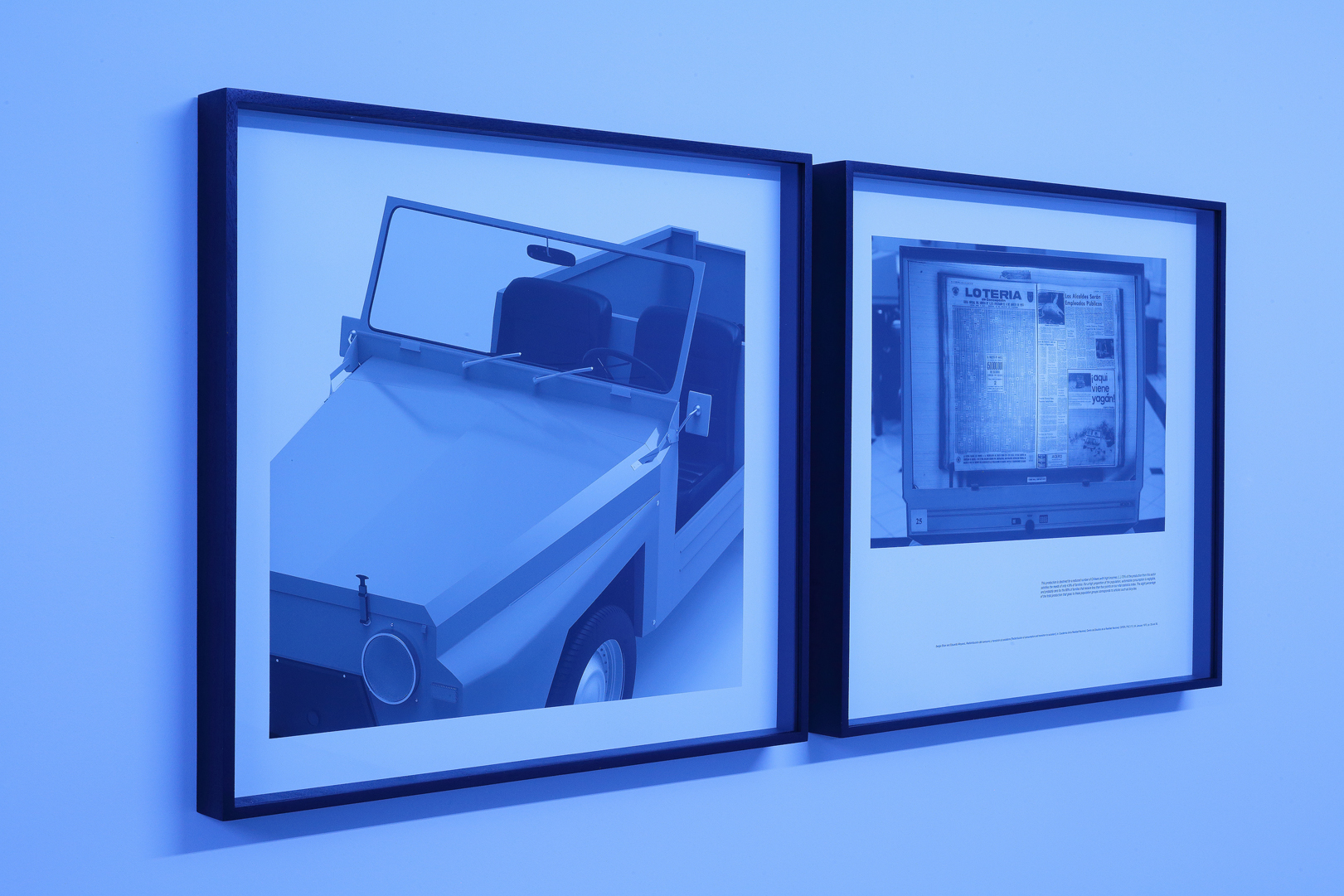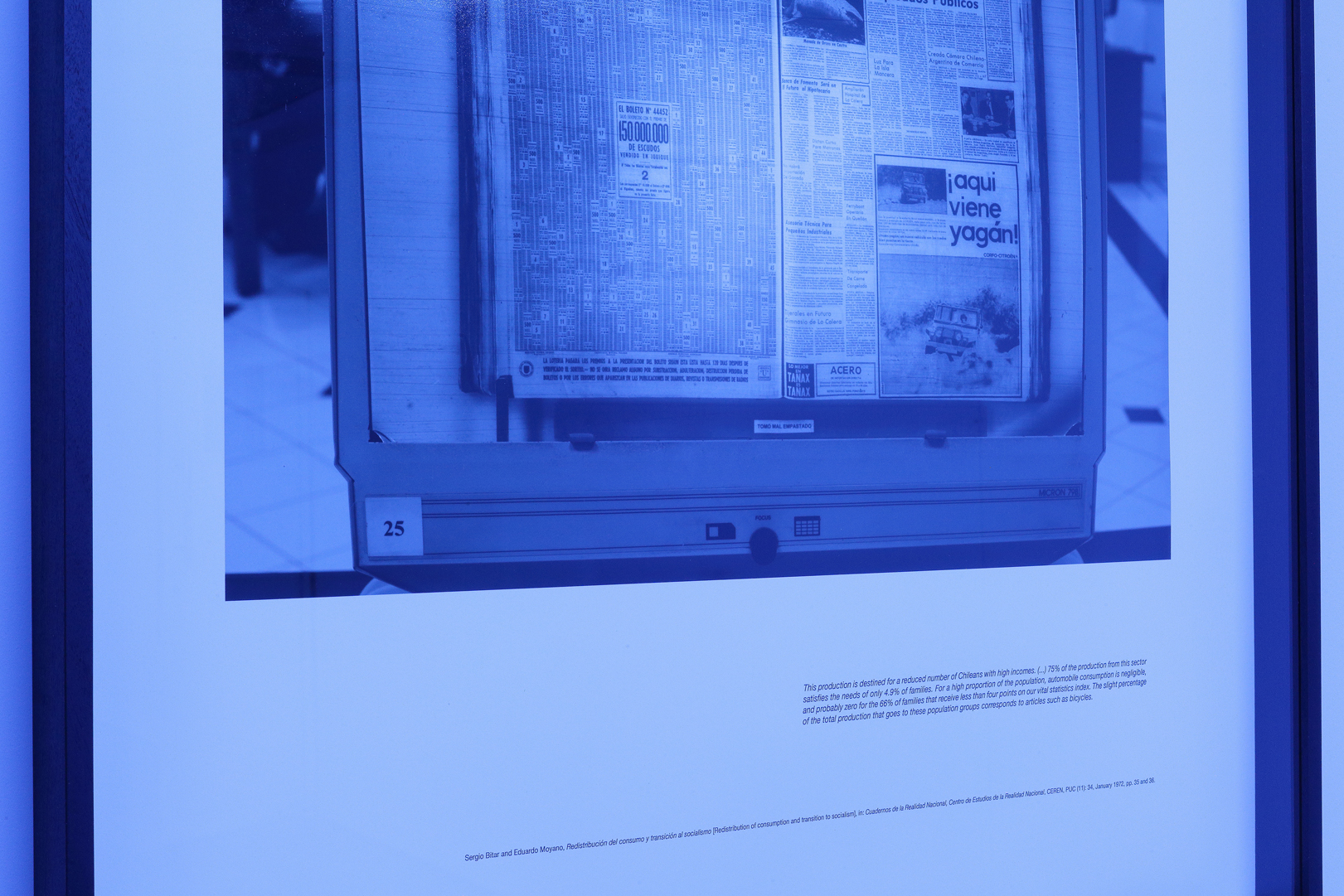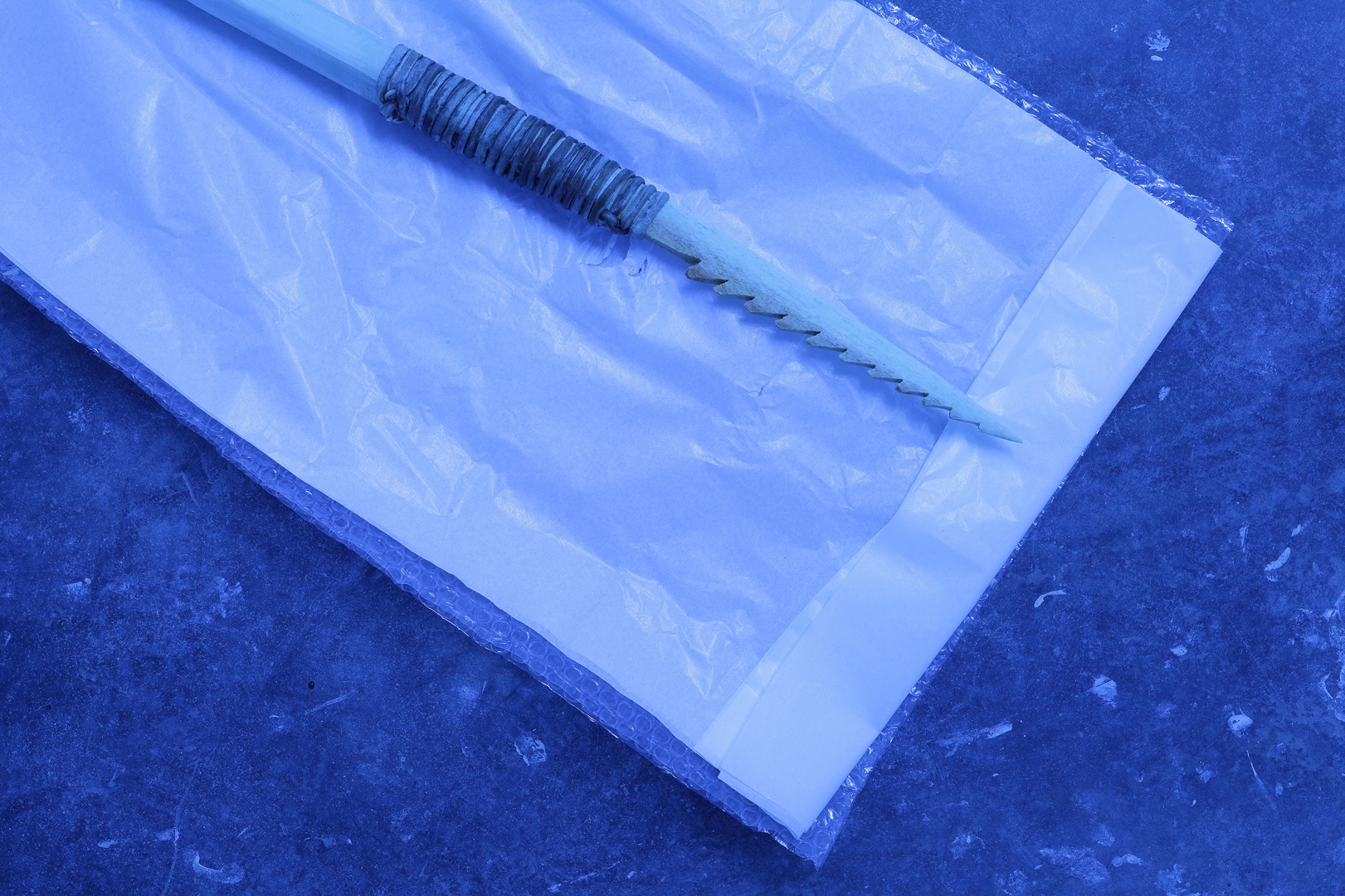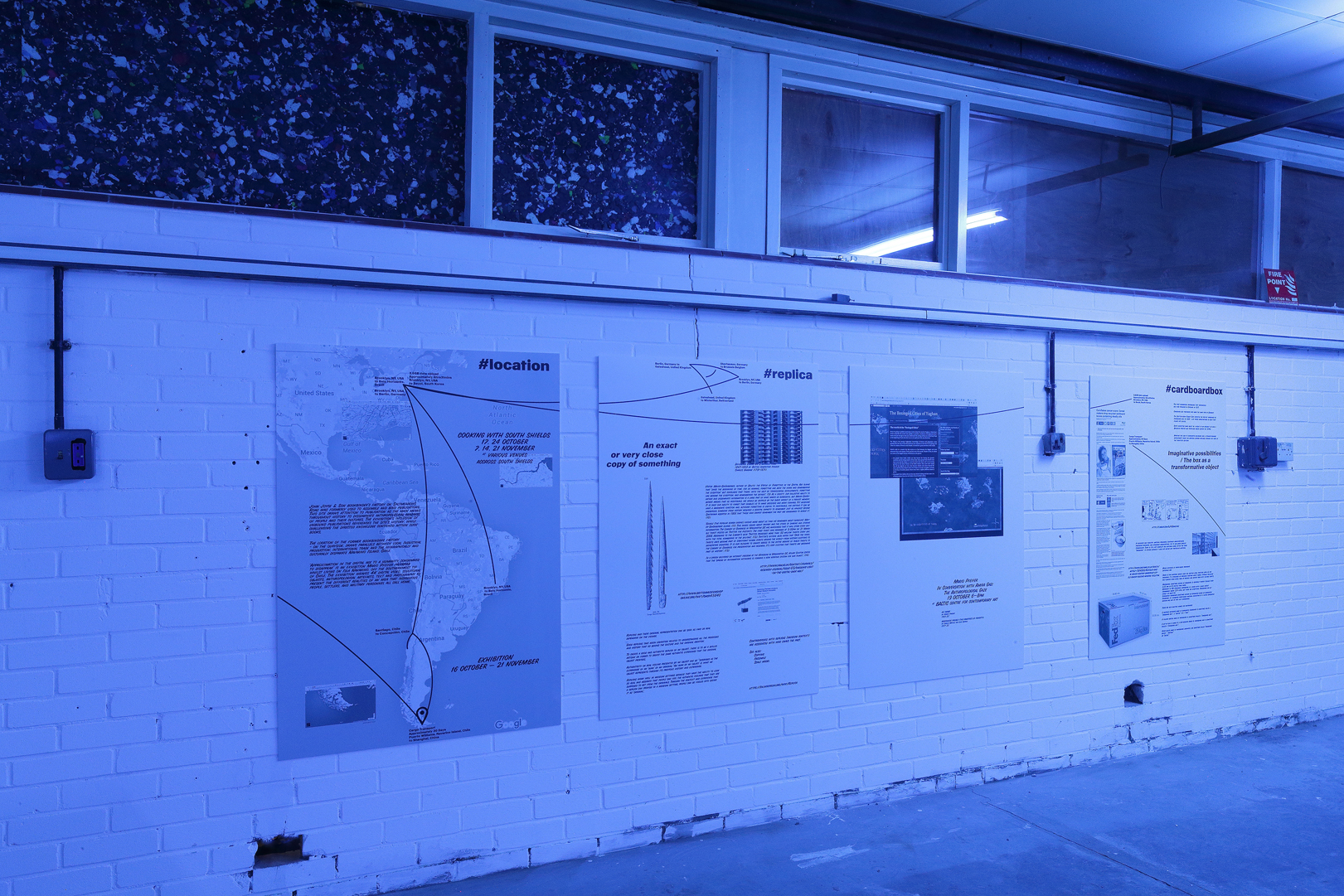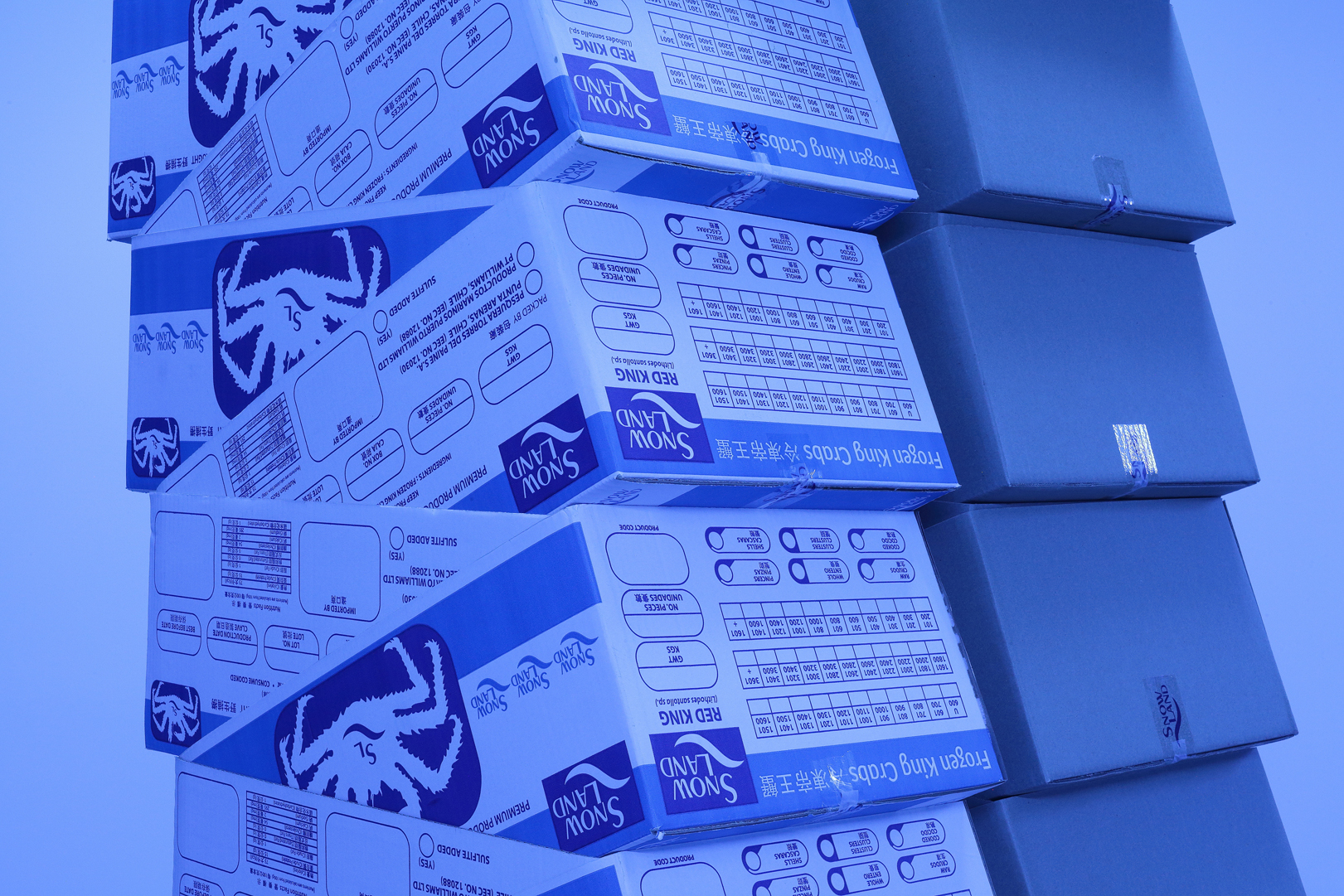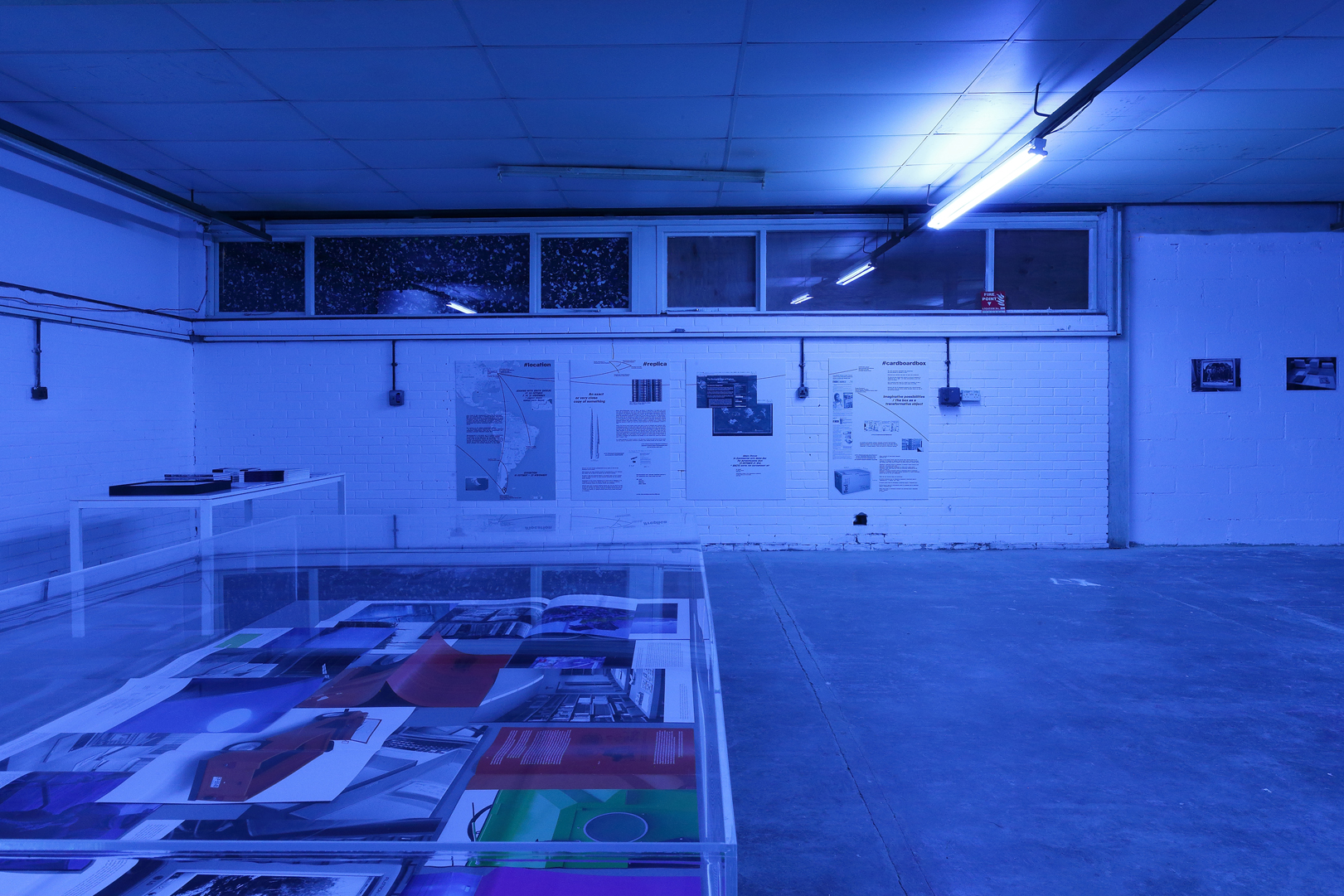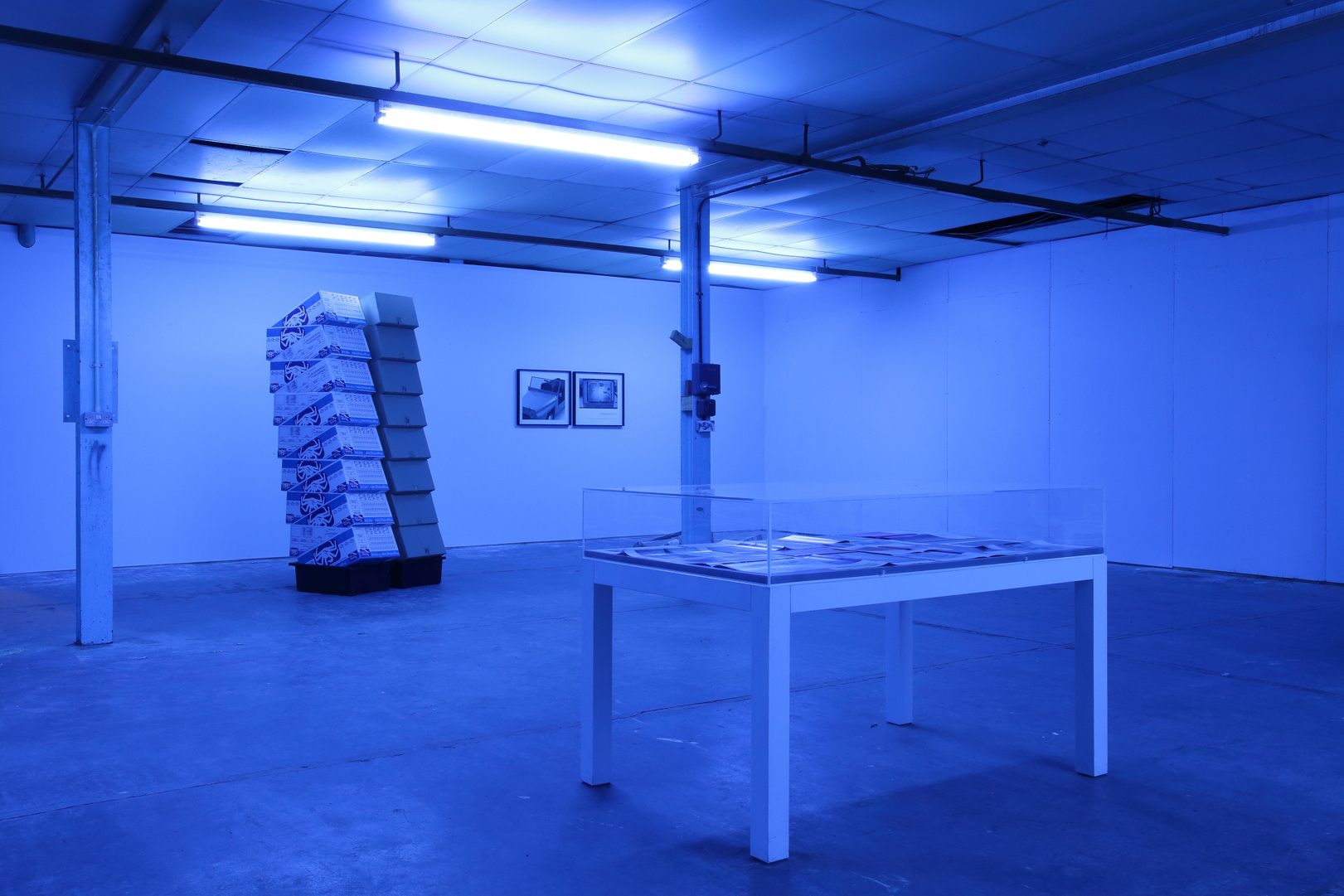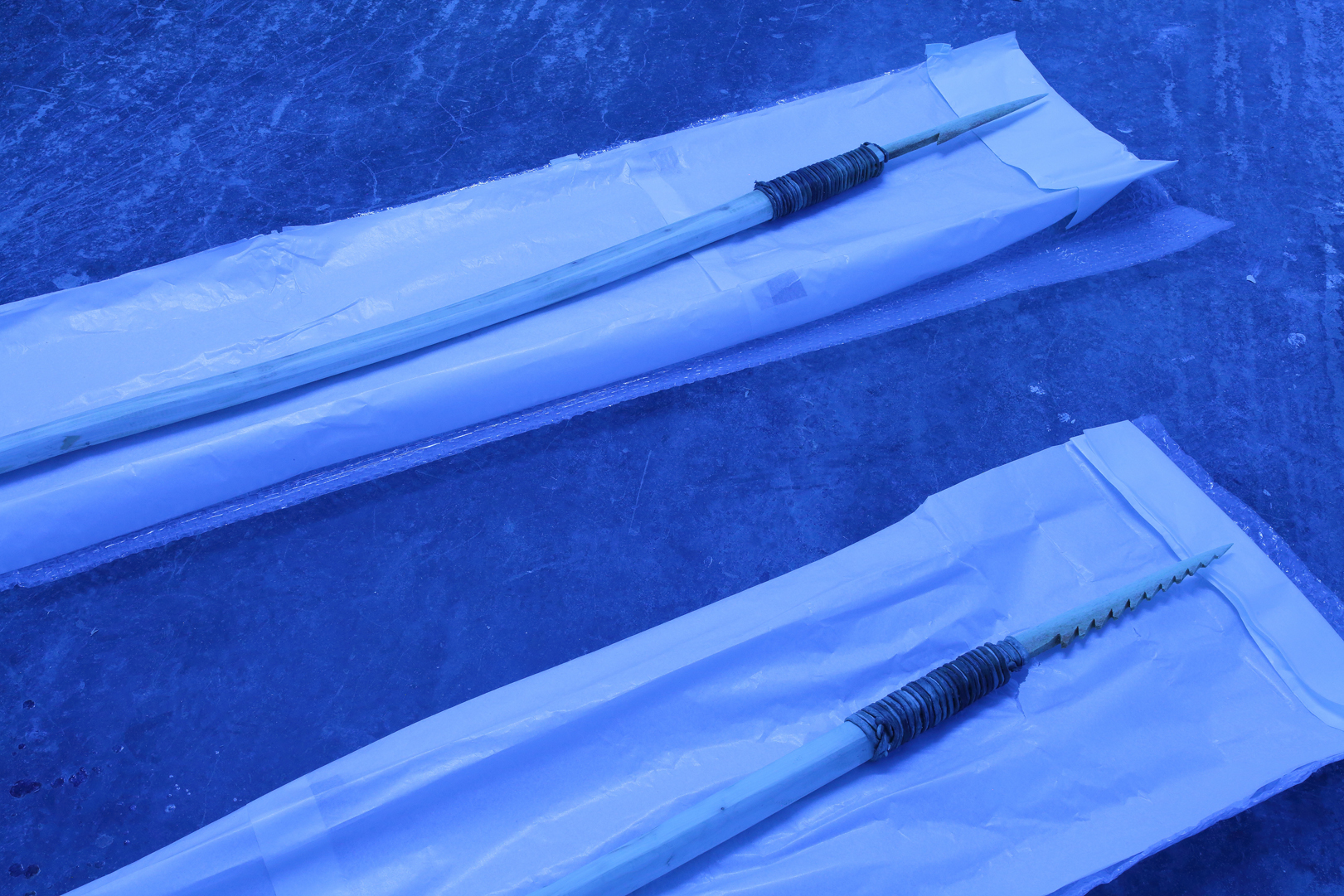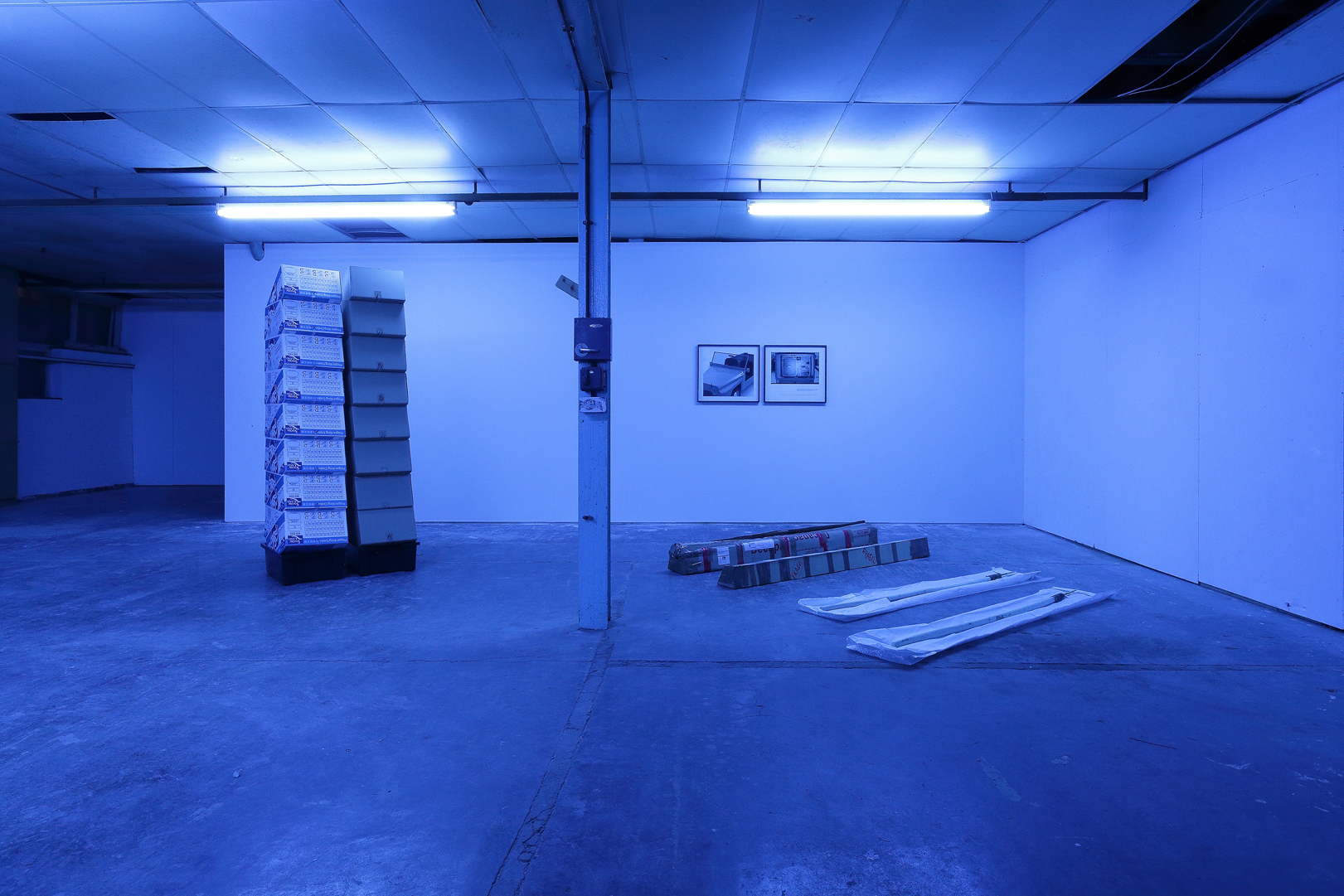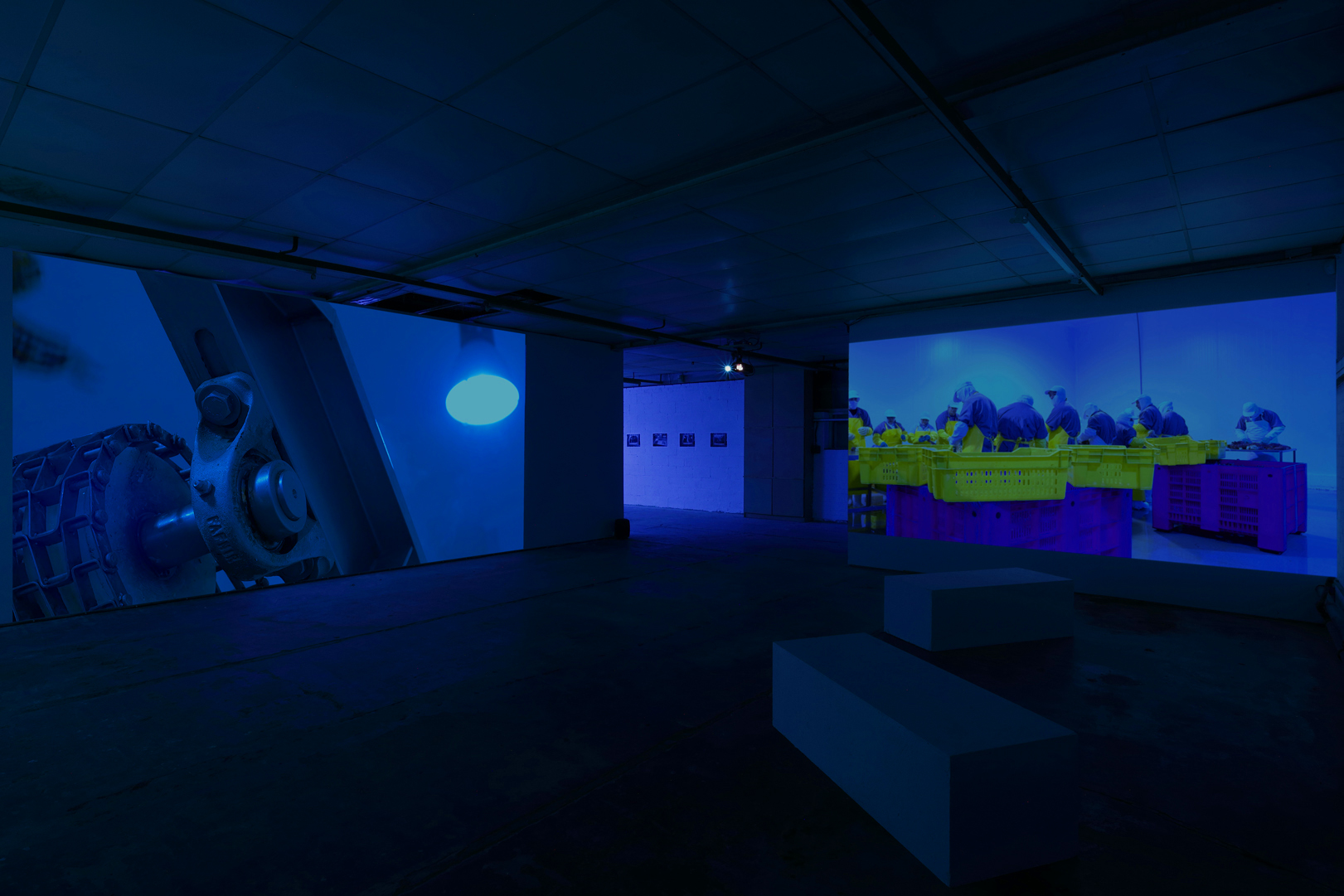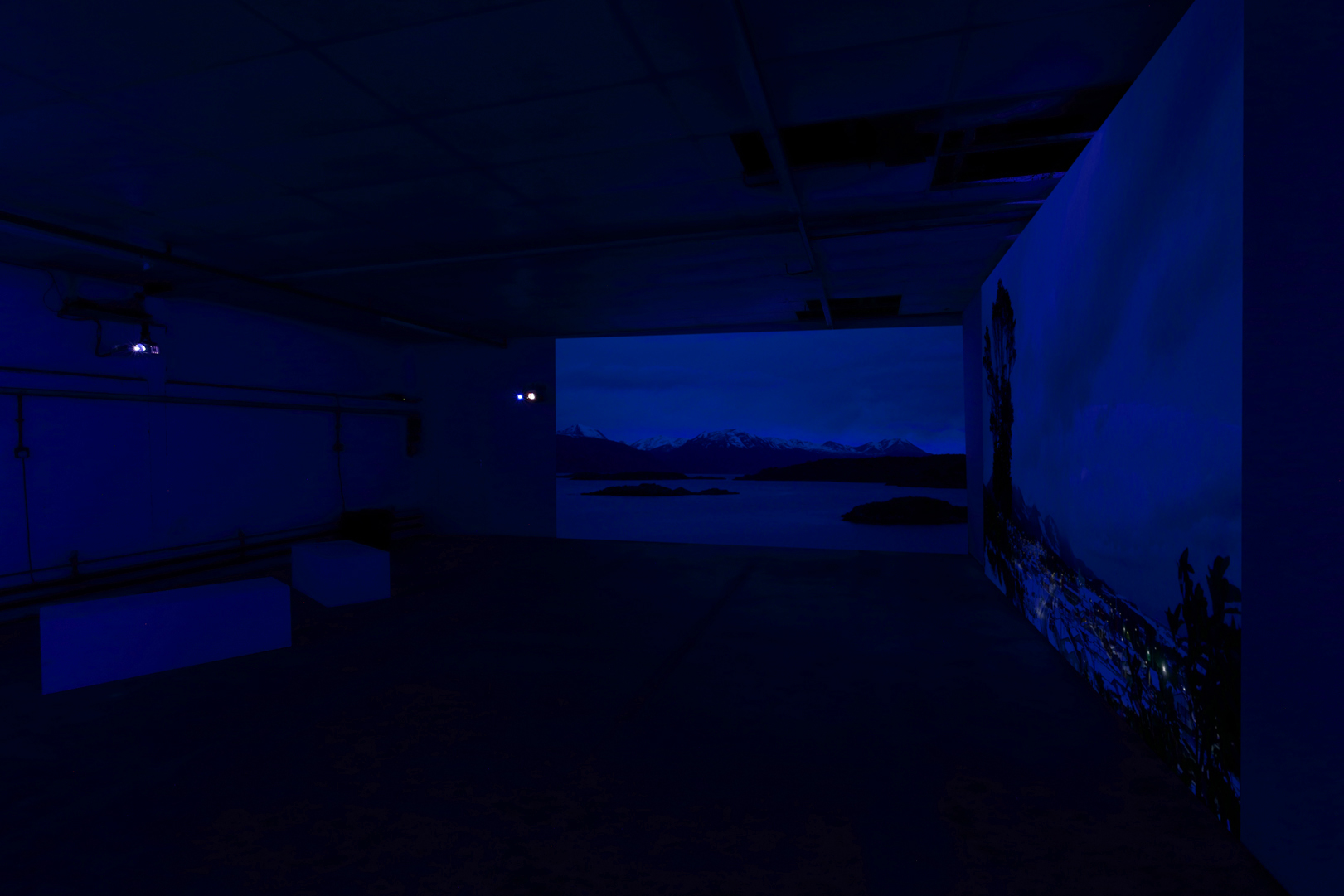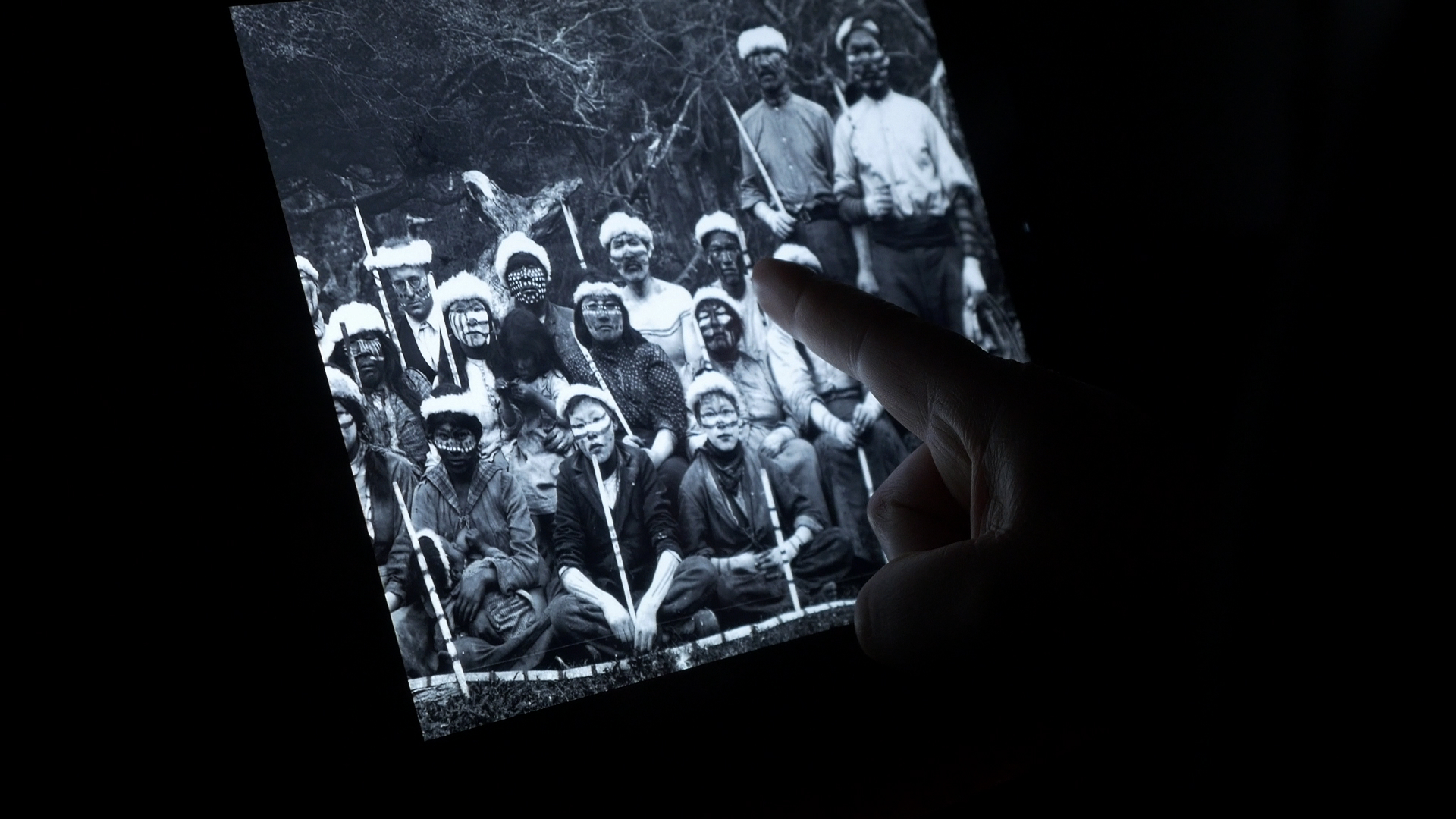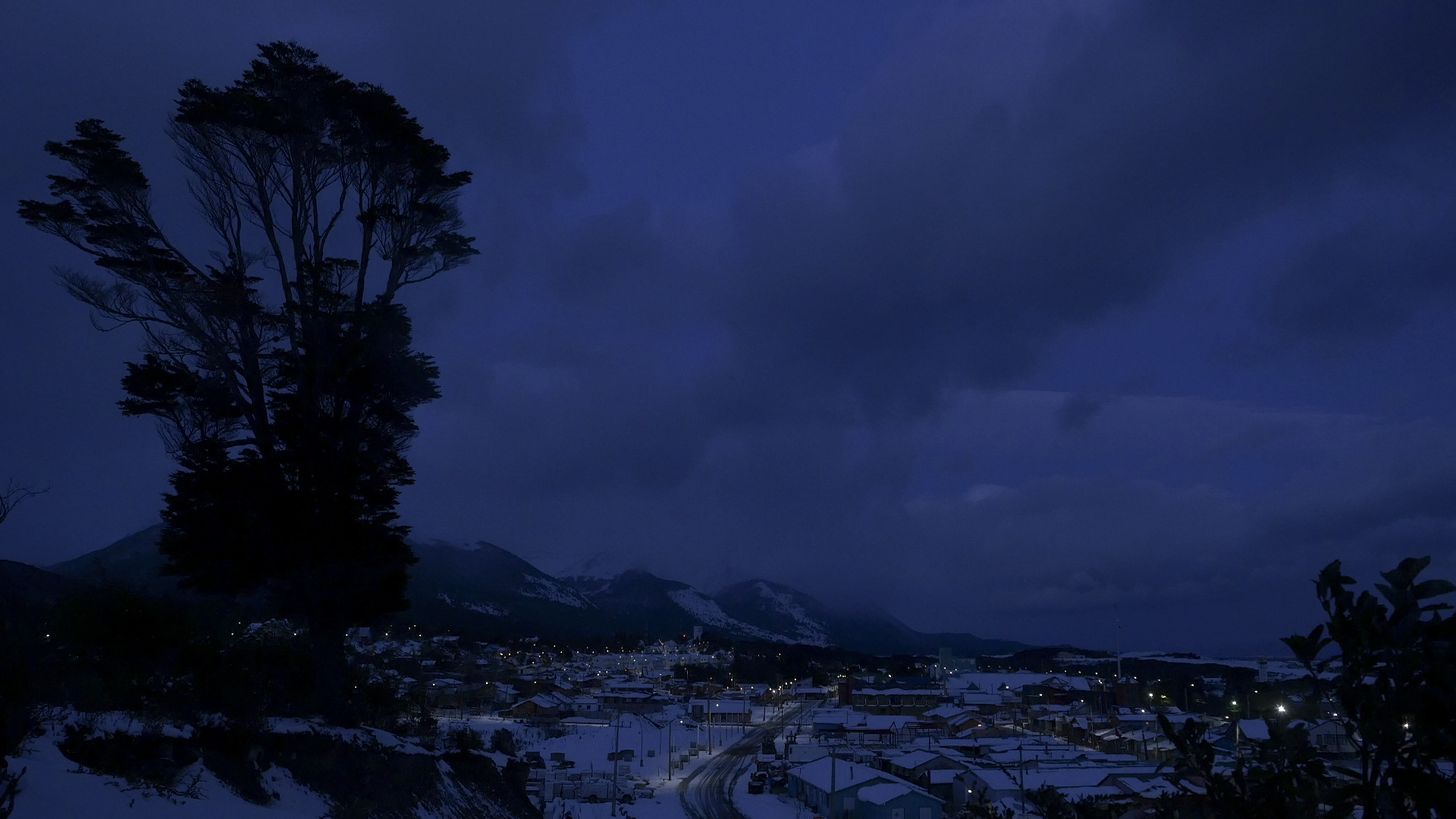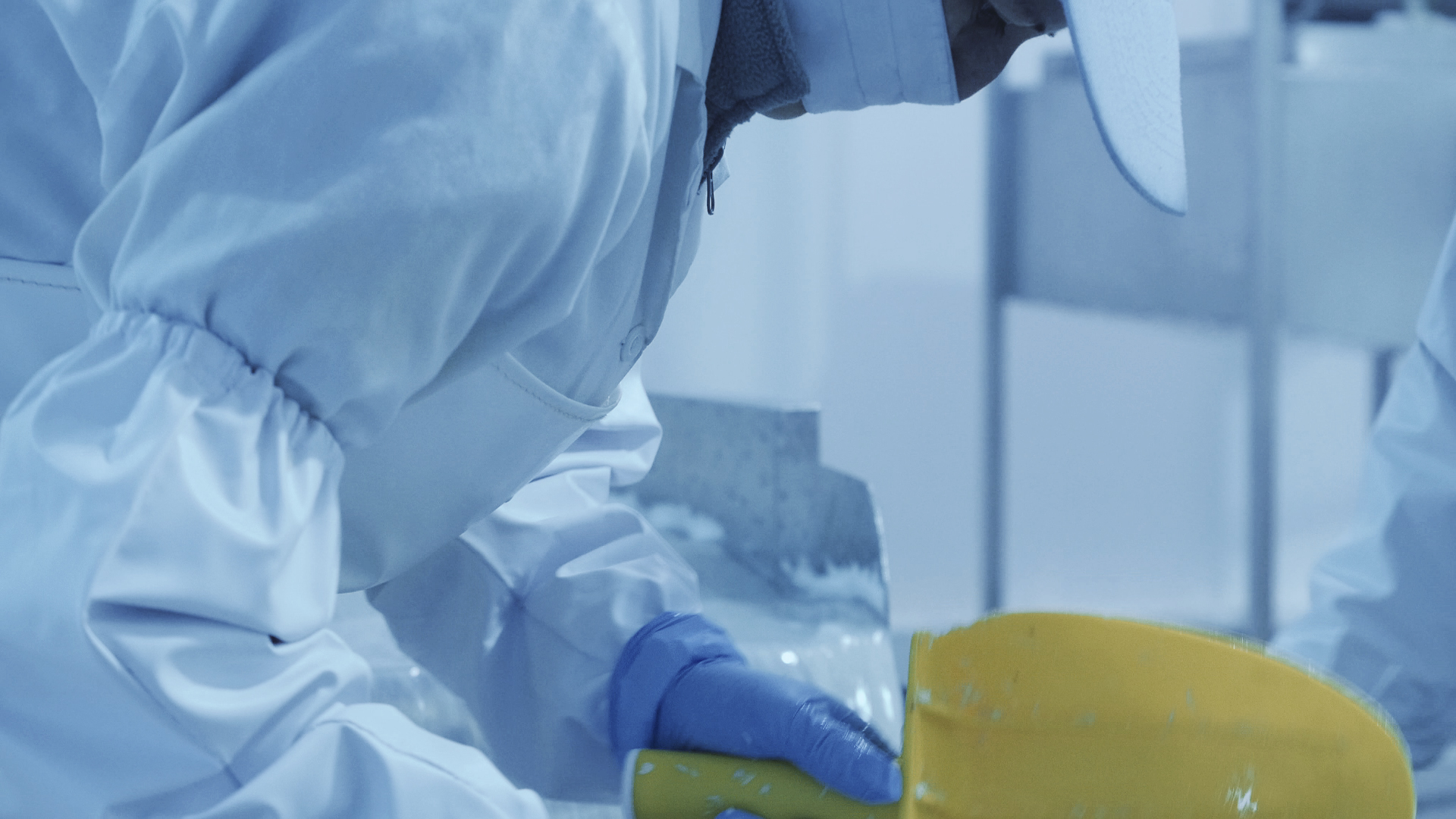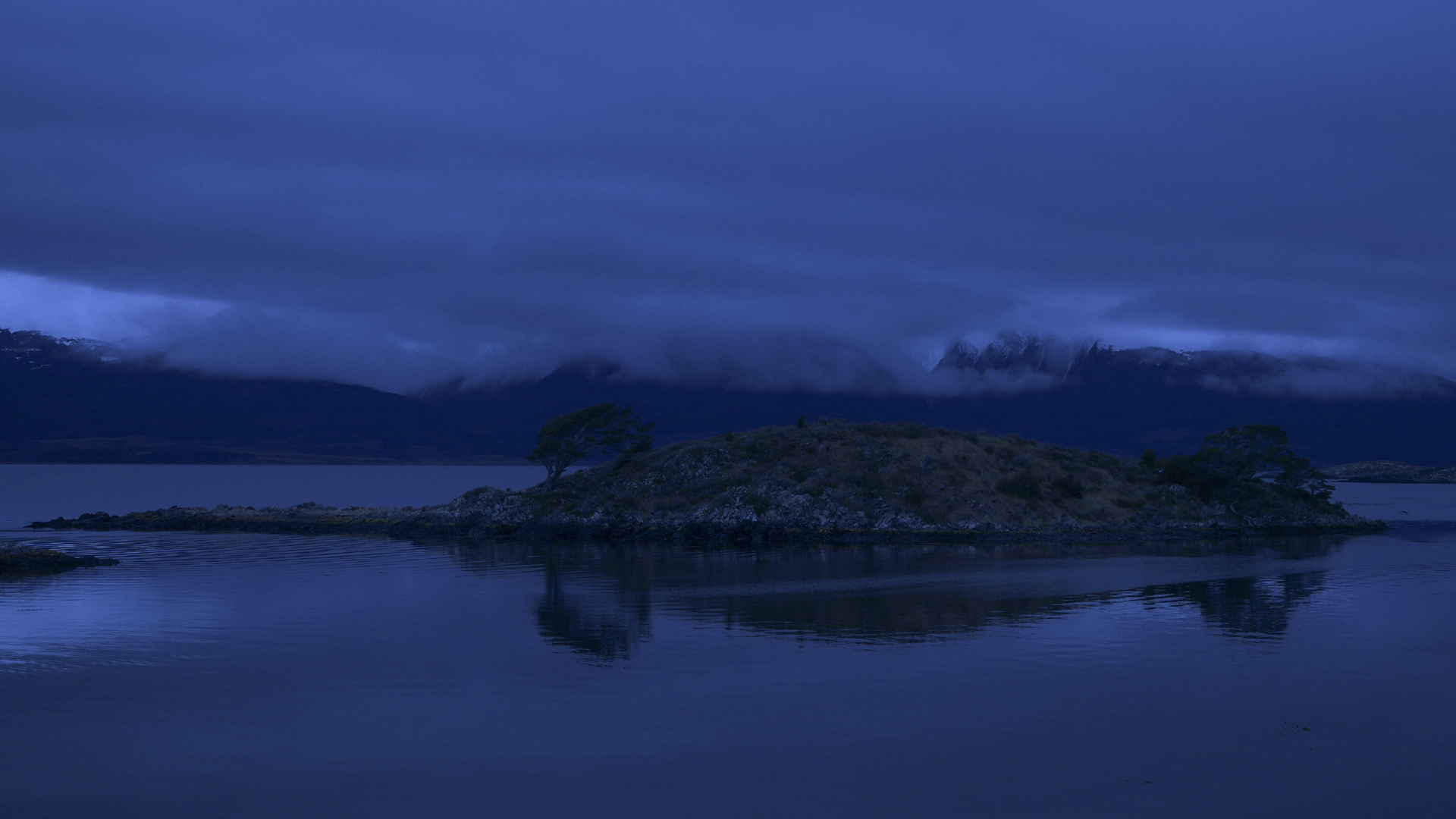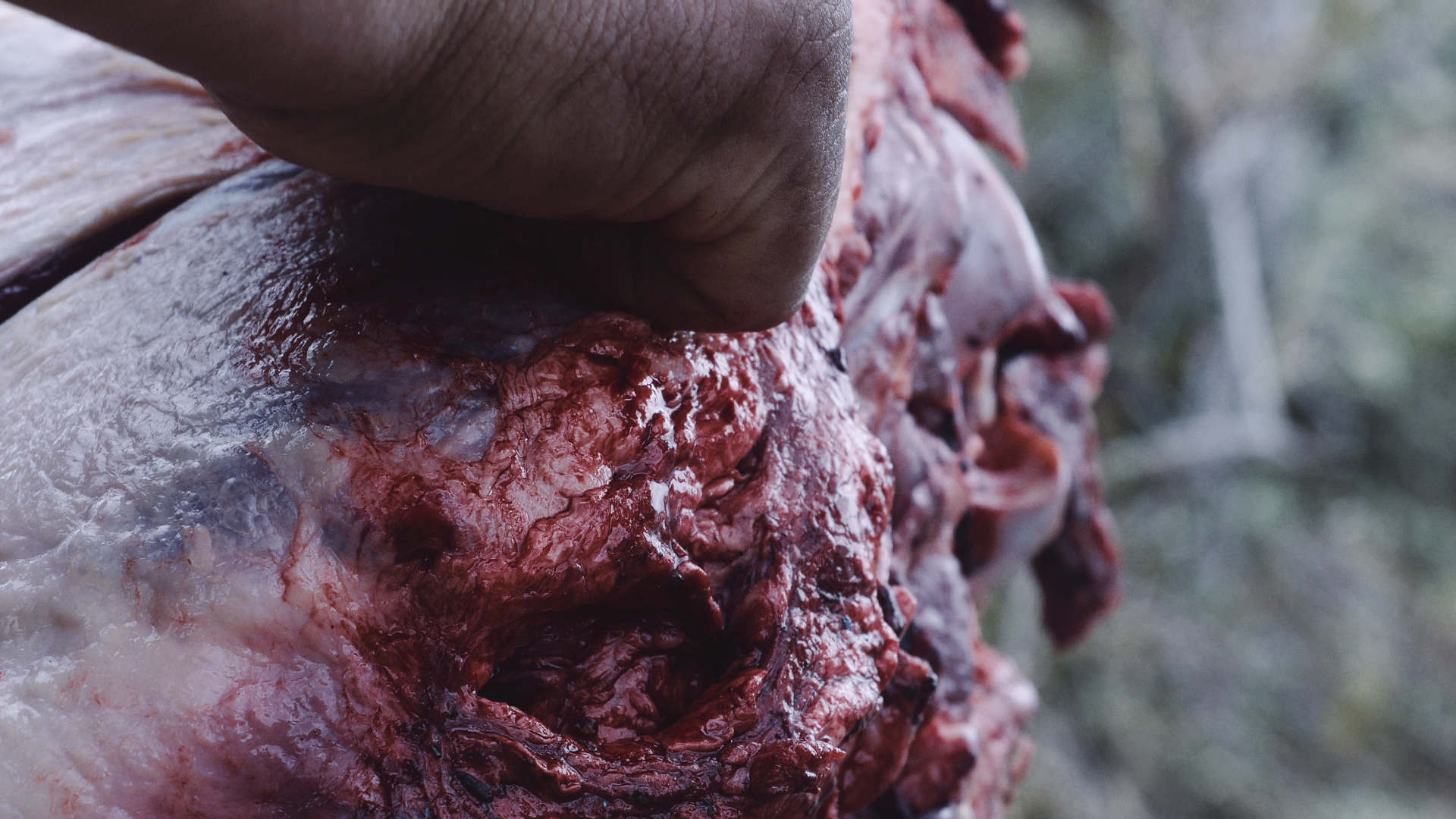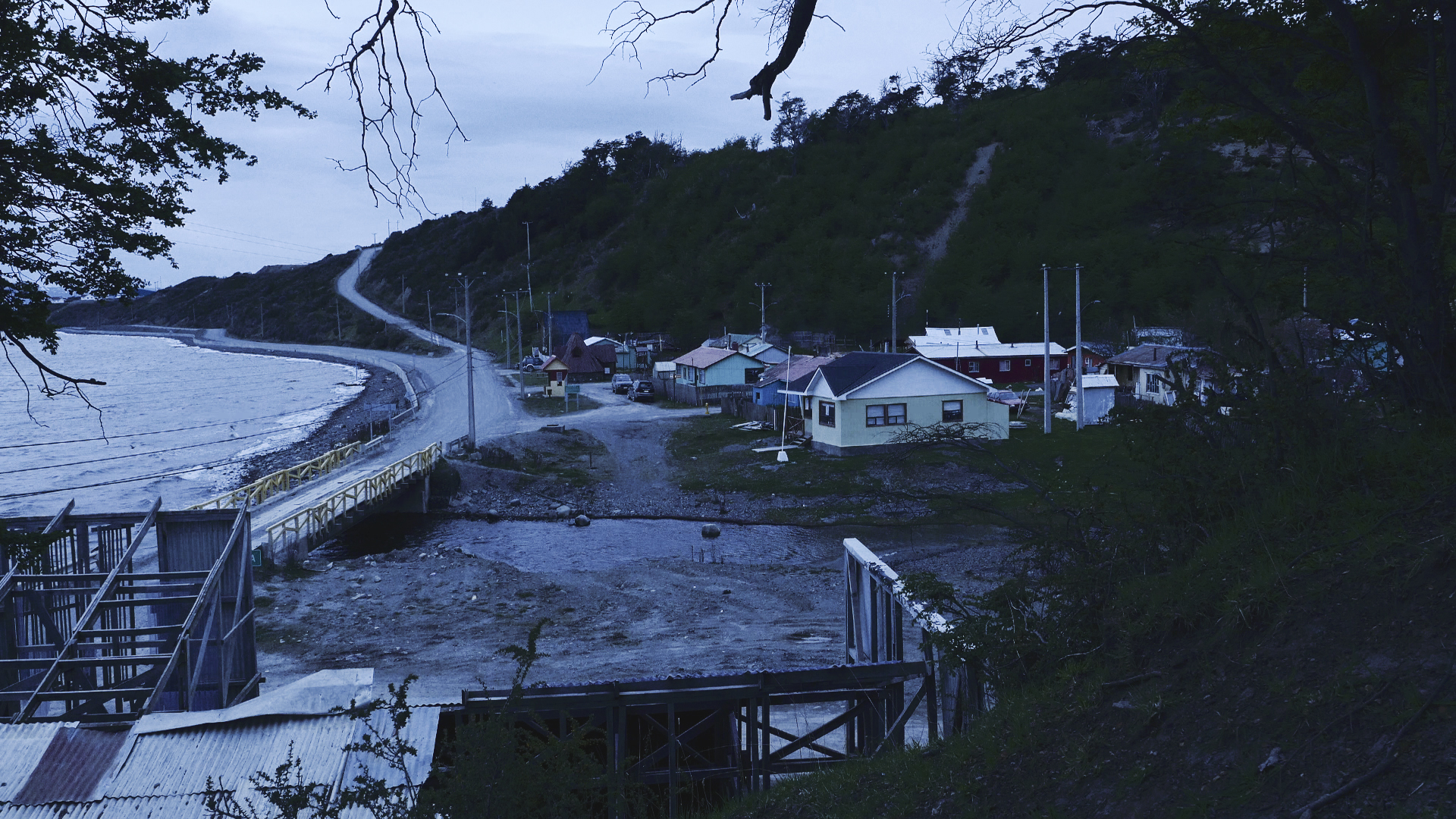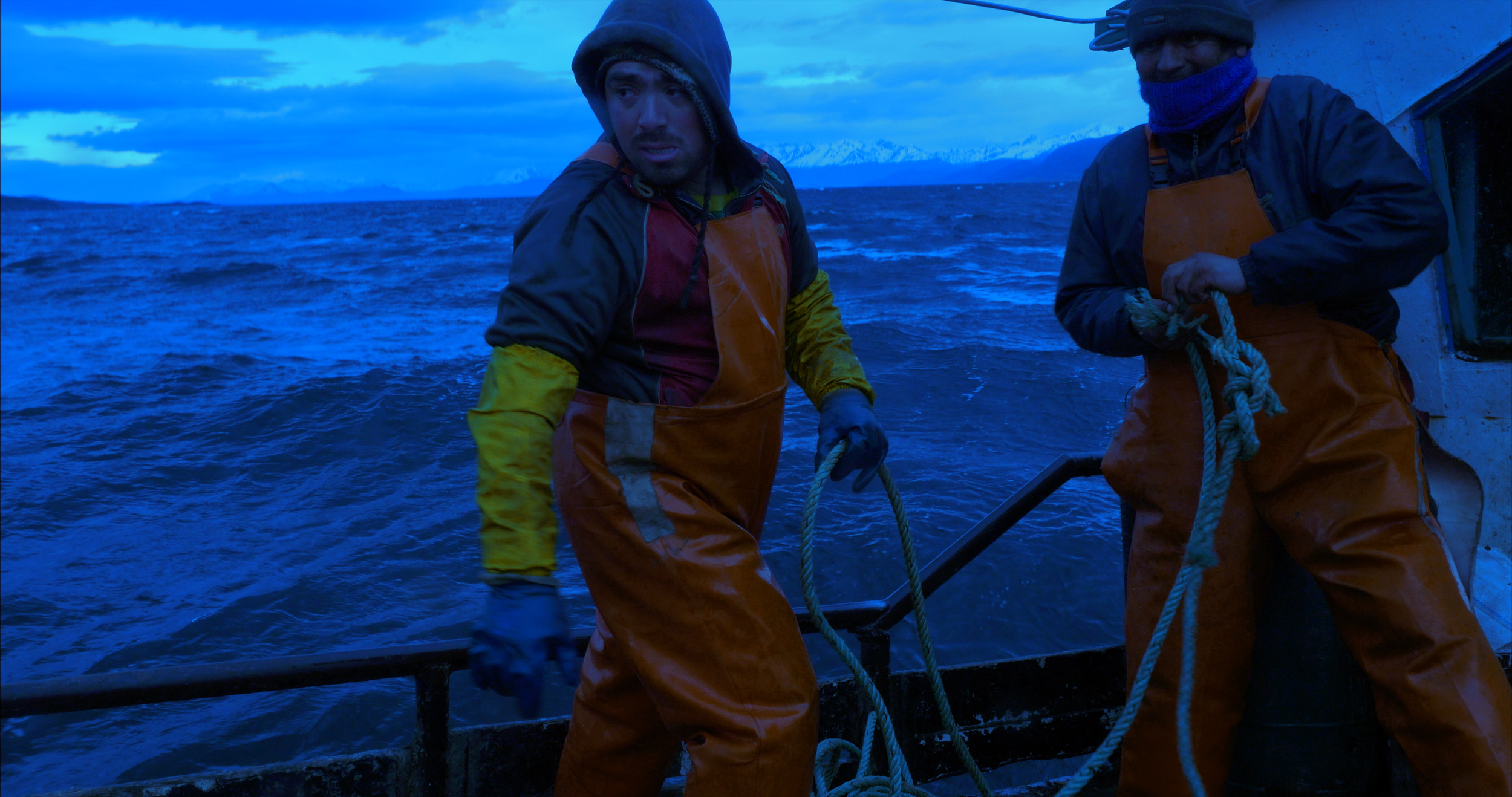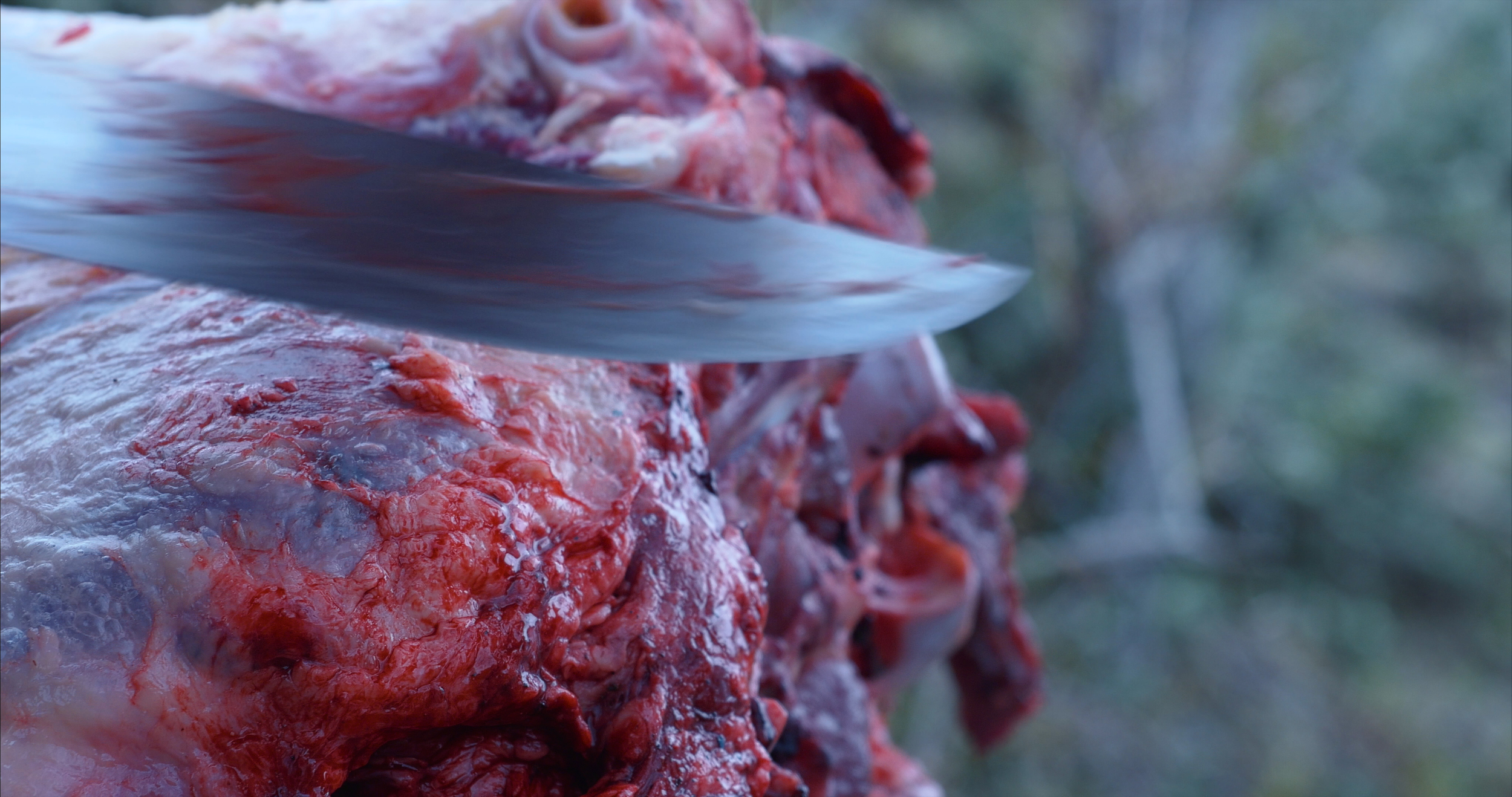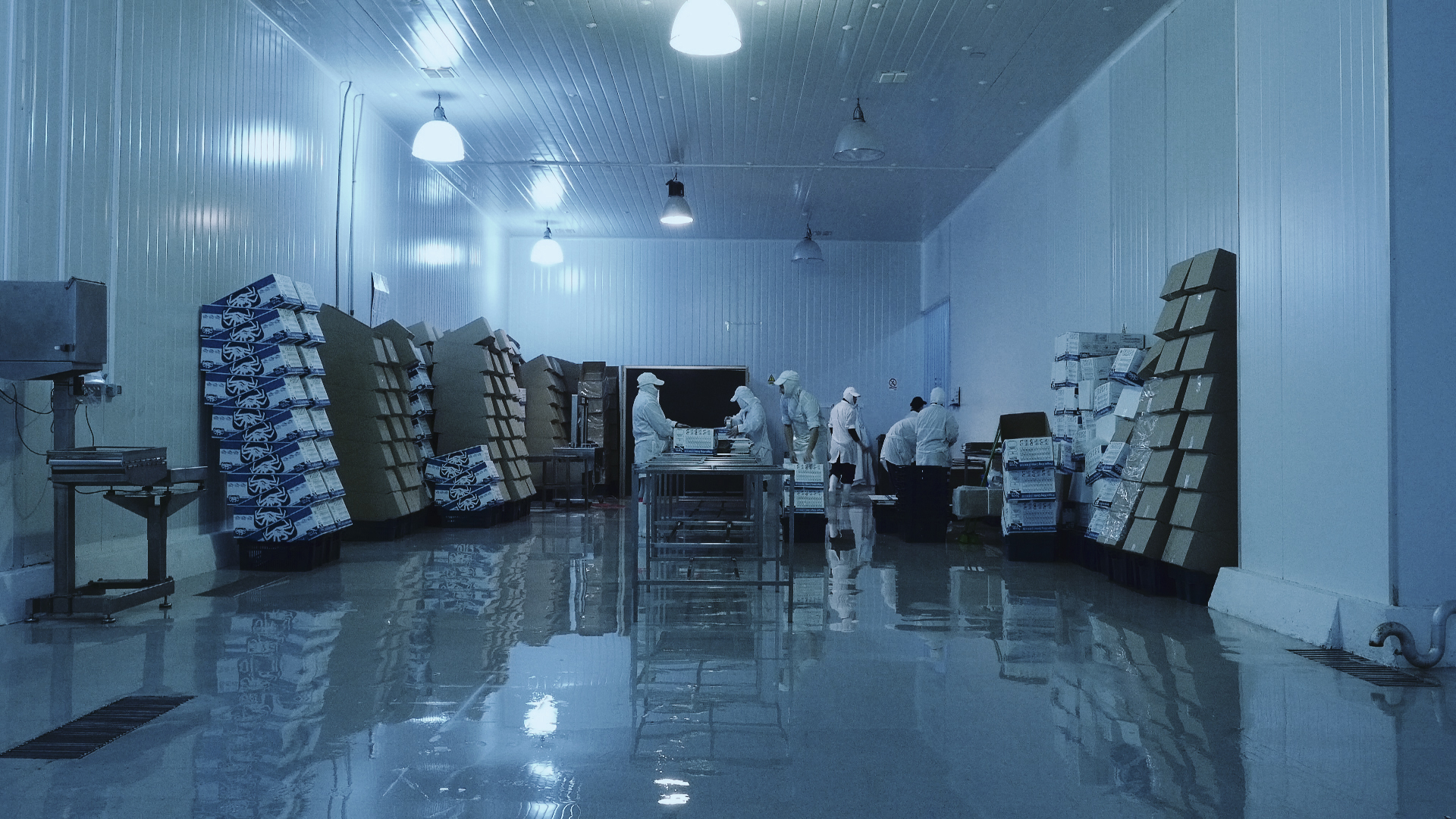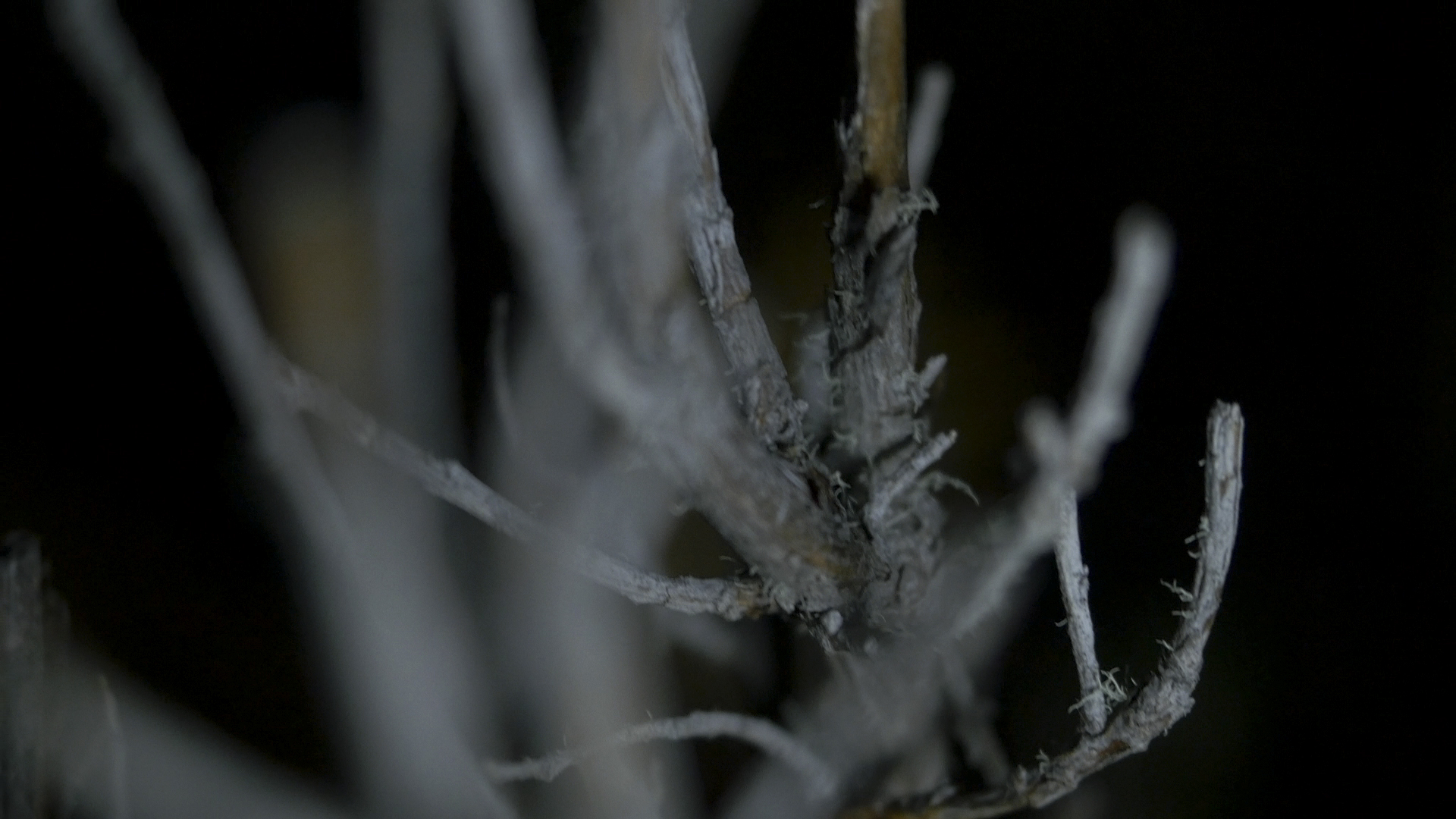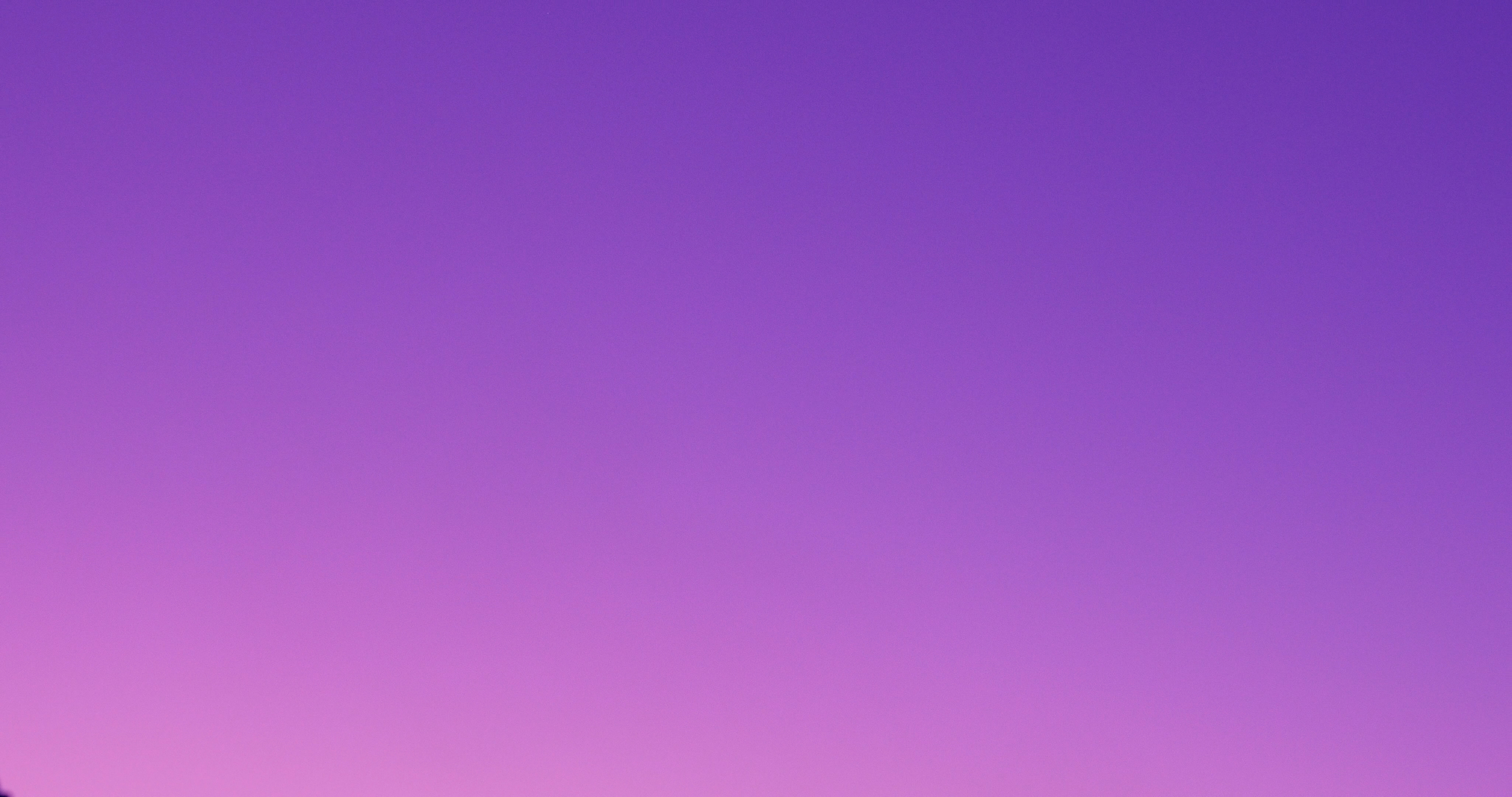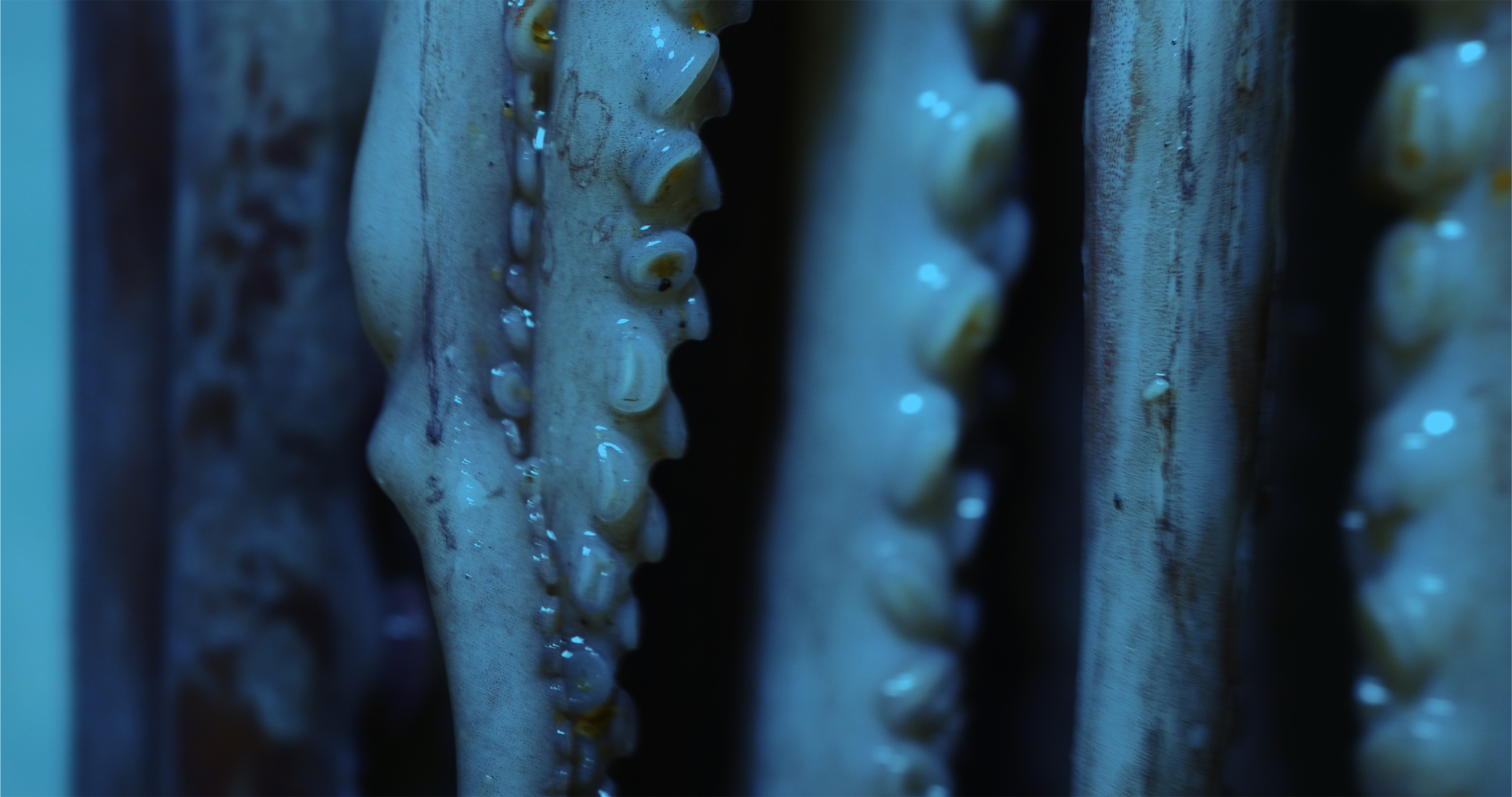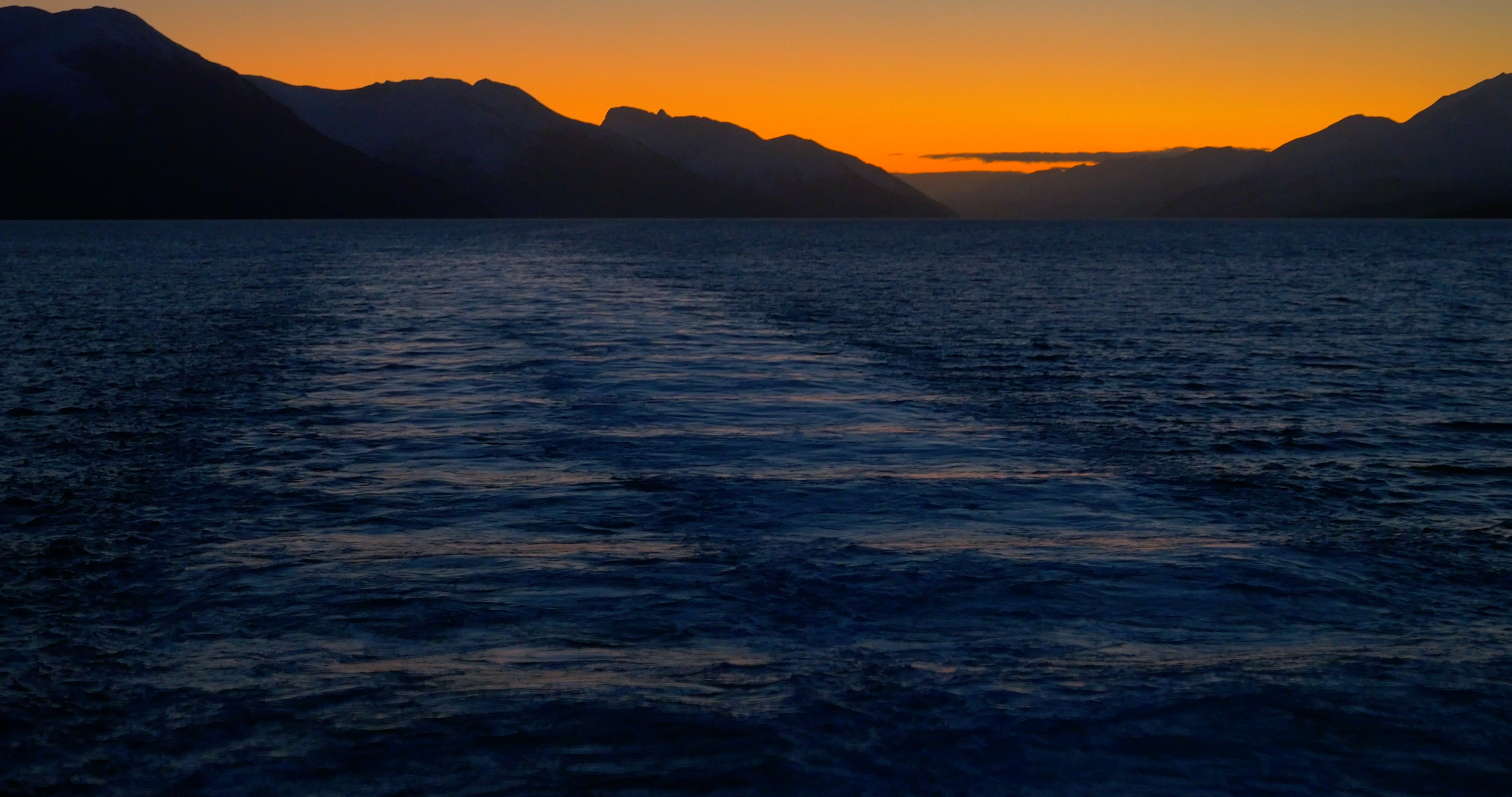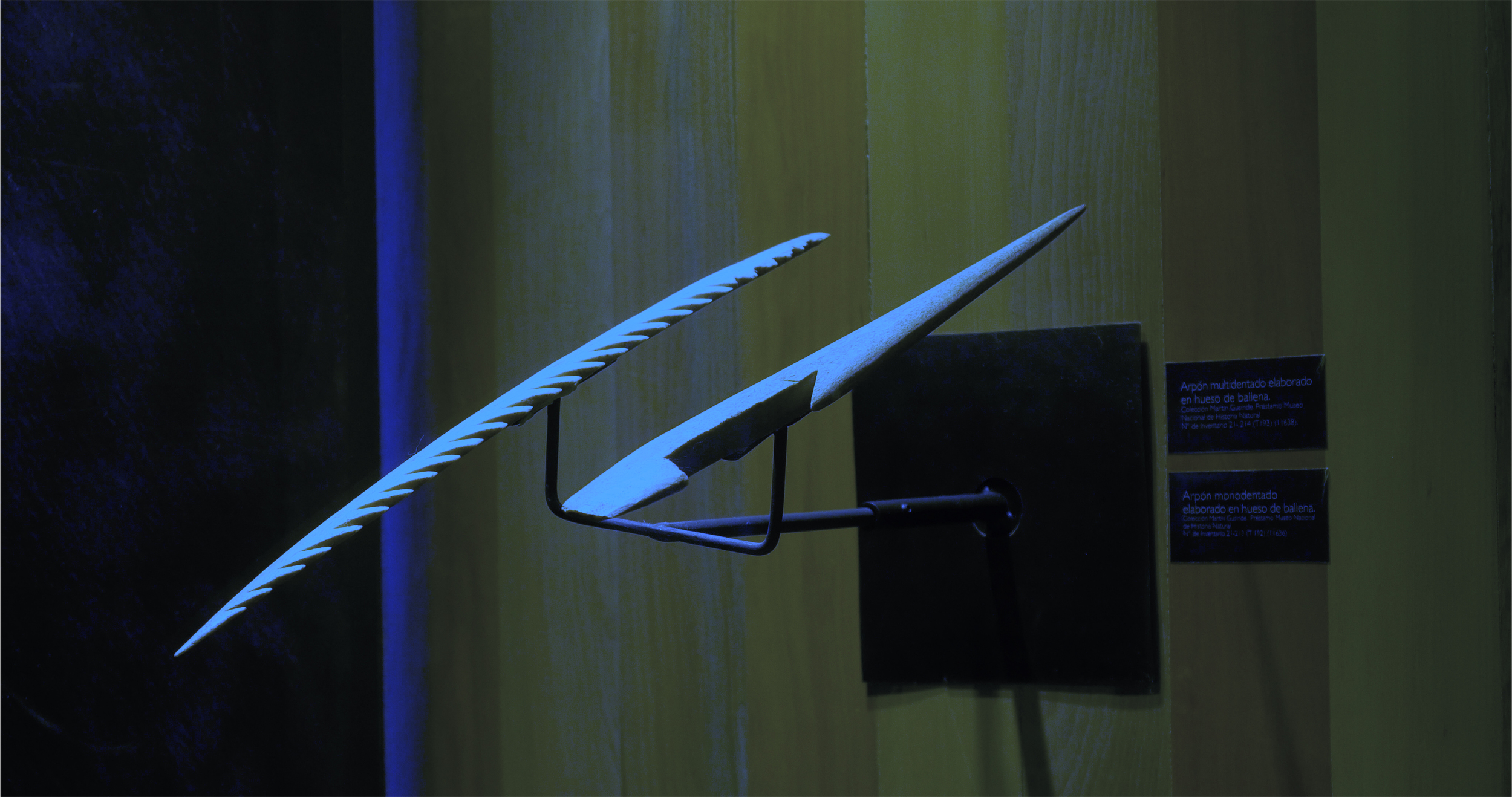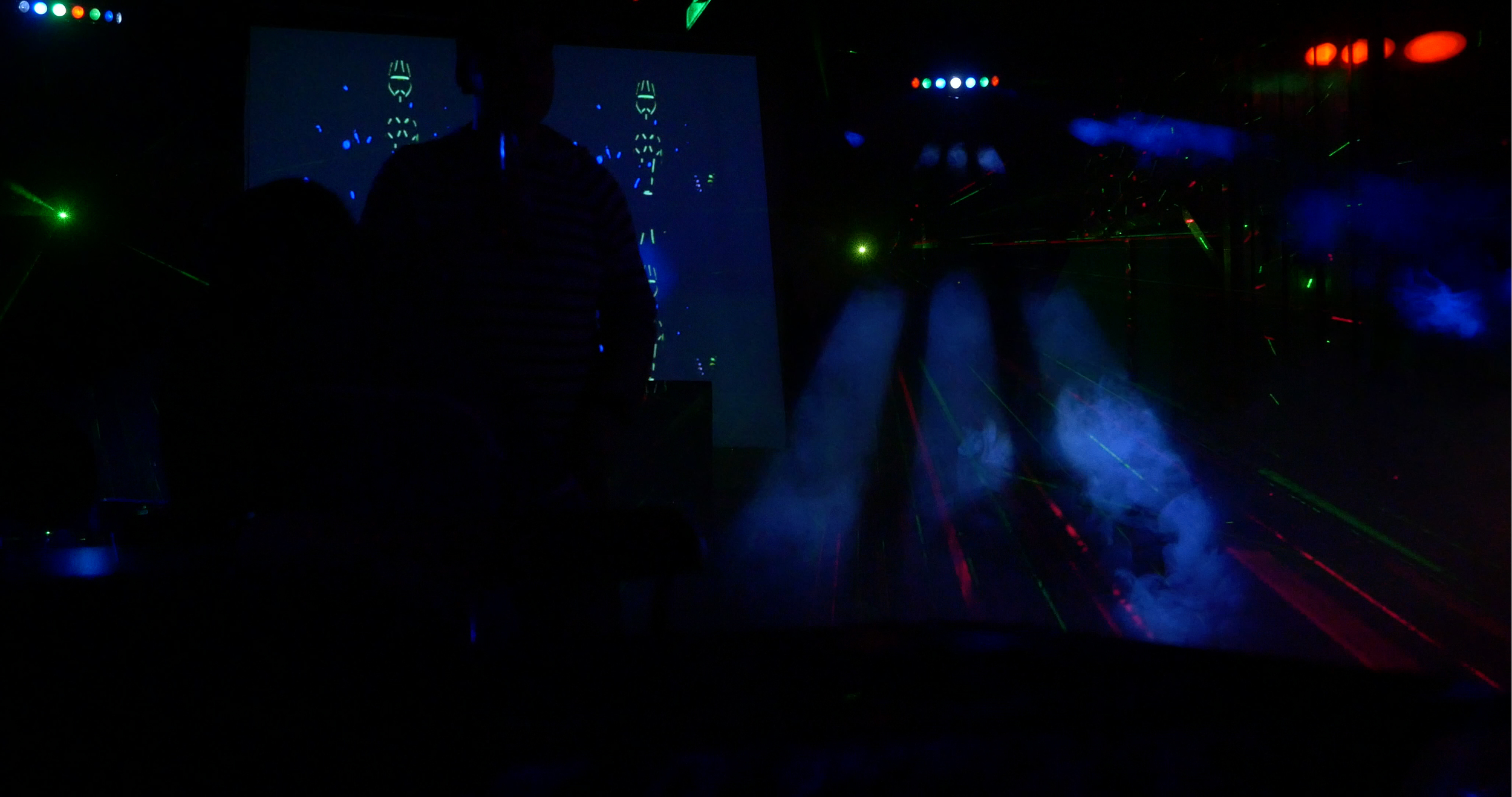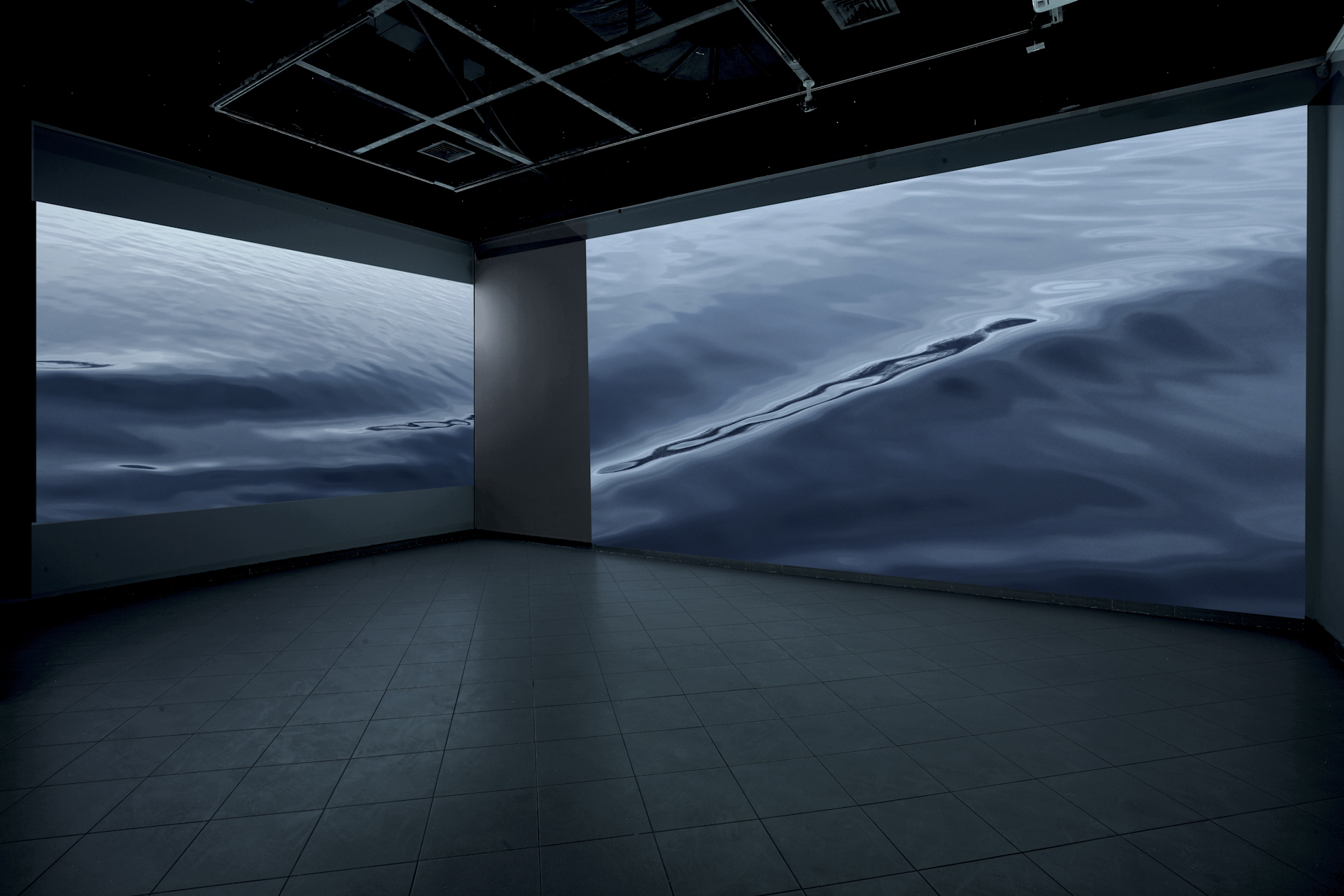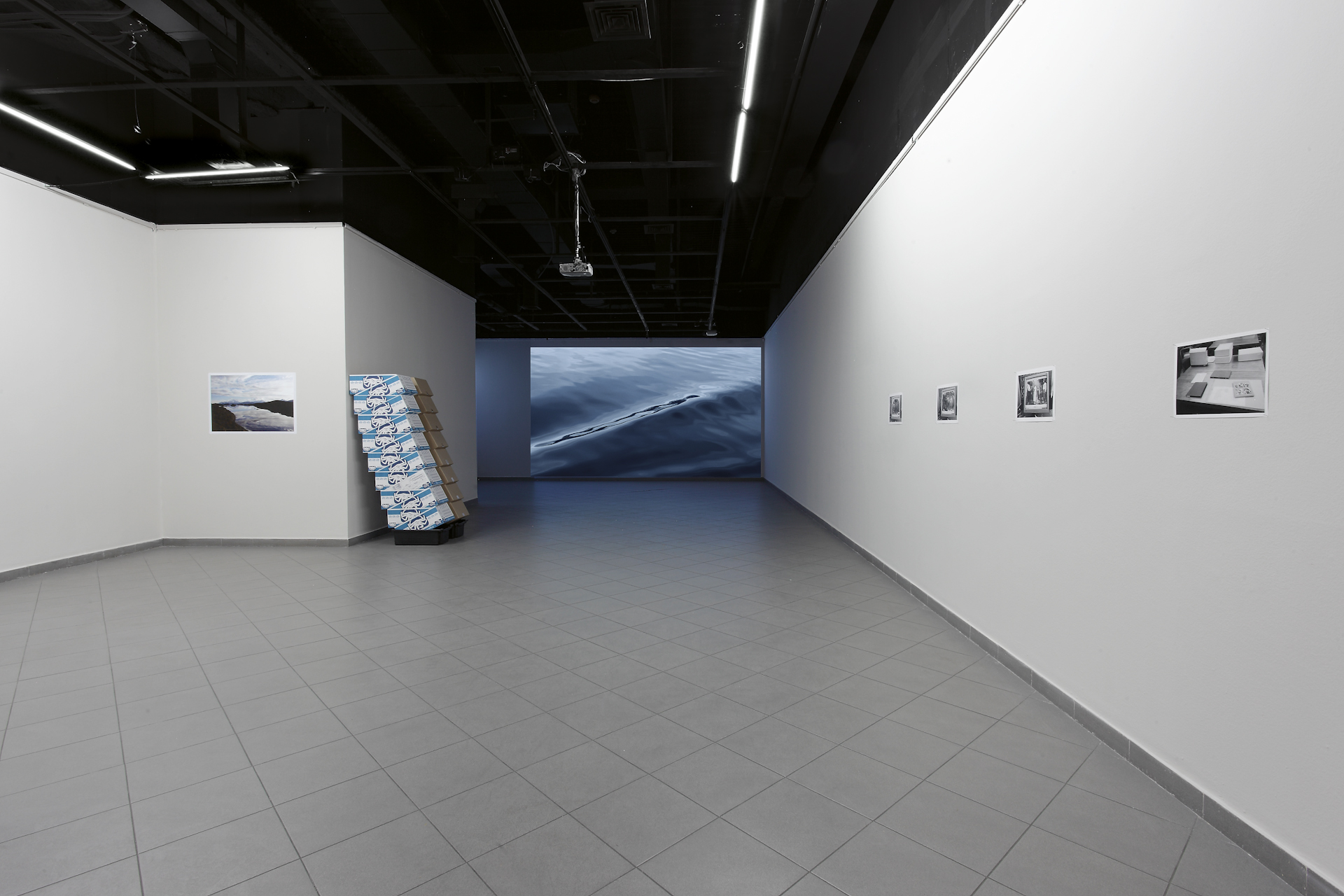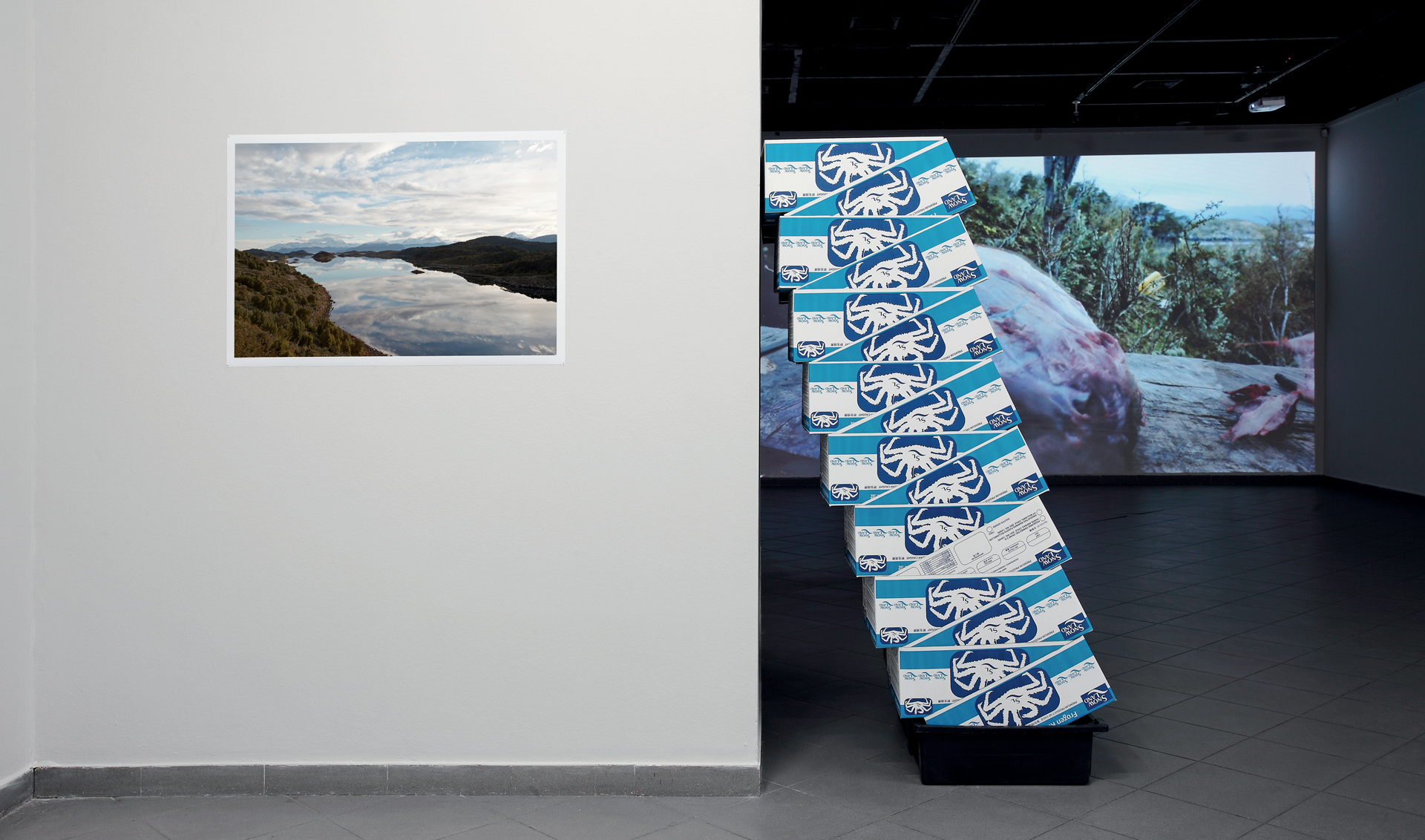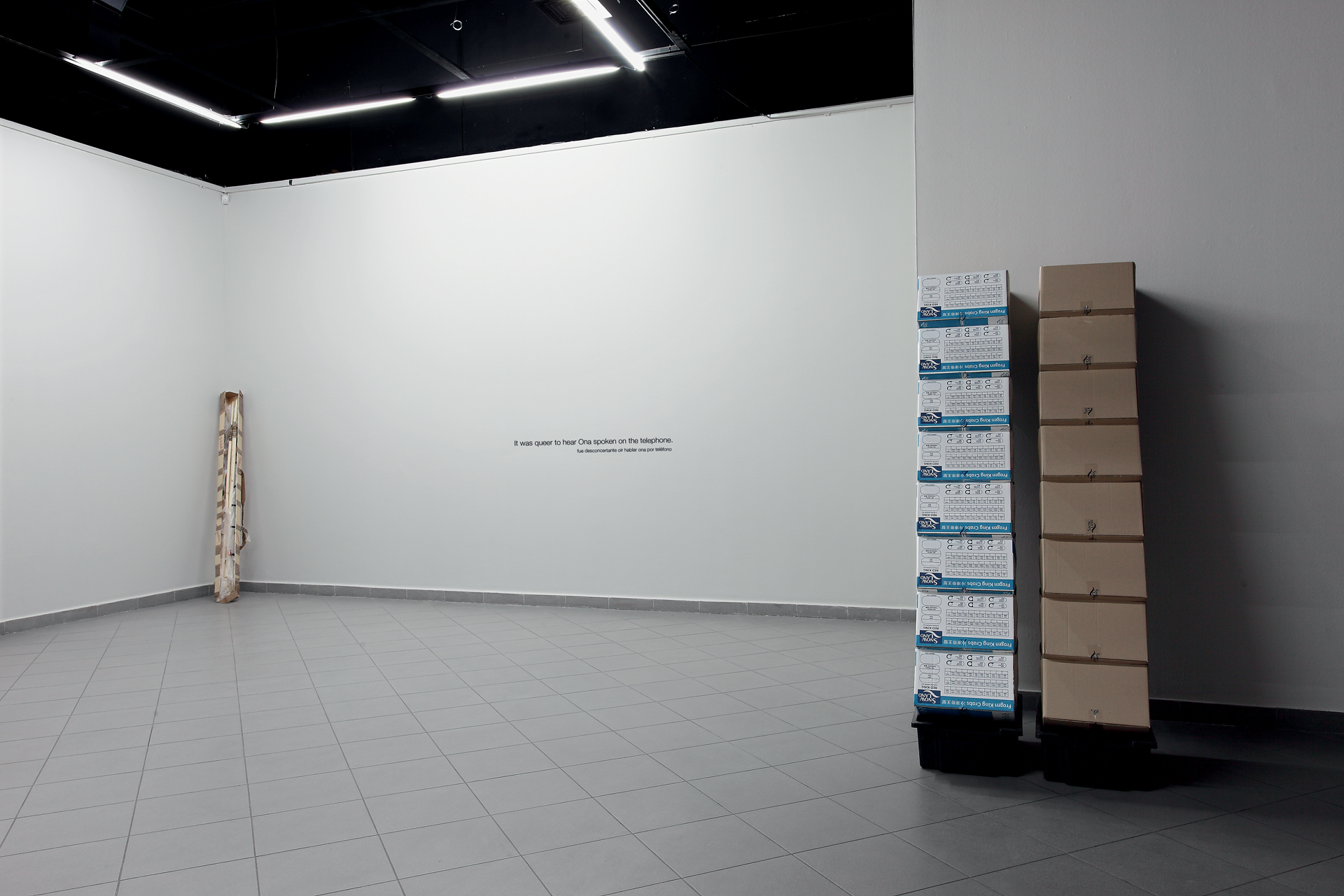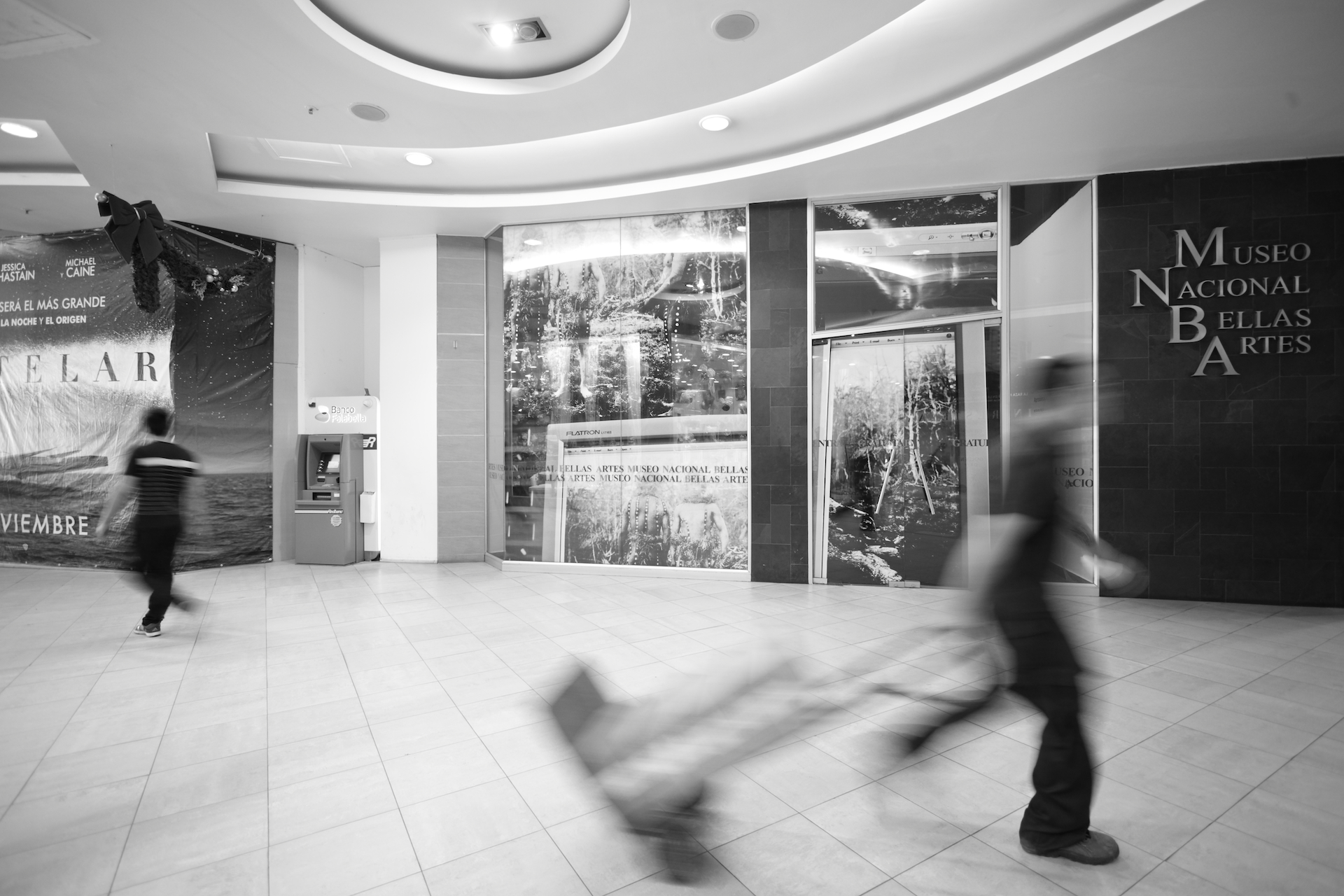Installation Views: KOW, Berlin, 2015 – Photography by Ladislav Zajac
Theatrical Premieres
Brooklyn Academy of Music, New York
Curated by Kevin McGarry and Nellie Killian
December 16, 2014, 8.30pm
German Festival Premiere / Official Selection German Competition
61. International Short Film Festival Oberhausen
April 30 - May 04, 2015
15. Seoul New Media Festival, South Korea
Gocal Propose International Competition / Asian Premiere
August 6 -14, 2015
Publications
Approximation in the digital age to a humanity condemned to disappear
edited by Mario Pfeifer and Thomas Seelig, form by Markus Weisbeck, funded by Museo Nacional de Belles Artes - Museo sin Muros Artes Santiago de Chile, Goethe-Institut, Cultural Foundation of the Free State of Saxony, Circa Projects, Newcastle and KOW, Berlin, published in Spanish and English by Sternberg Press.
180 pp., Spanish / English, Softcoverr, ISBN 978-3-95679-088-1
Approximation - LP vinyl edition
Musical score written and produced by Kamran Sadeghi, commissioned by Mario Pfeifer for the multichannel video
installation Approximation in the digital age for a humanity condemned to disappear.
Artwork by Markus Weisbeck, photographs and video stills by Mario Pfeifer, published by Sternberg Press
12-inch LP, 2015, Gatefold, 4/4 Offset, Catalog ID.: KS_MP_SP_2015
KOW, Berlin
May 1 – July 25, 2015
Opening reception,May 1st, 2015, 6 - 9pm
curated by Thomas Seelig
December 5, 2015 – January 31, 2016
Circa Projects, Newcastle (UK)
curated by Adam Phillips and Dawn Bothwell
October 18 – November 25, 2015
MUNDO, IMAGEM, MUNDO – International Photography Festival, Belo Horizonte, Brazil
October 3 – November 29, 2015
BEURSSCHOUWBURG , Brussels
Daily screenings on October 2 –10, 2015 organised by Helena Kritis
Opening October 2, 2015
Museo sin Muros, Museo Nacional de Belles Artes, Santiago de Chile
curated by Patricio M. Zárate
November 15 - December 14, 2014
Opening reception, November 15, 2014, 7 - 9pm
Museo sin Muros, Museo Nacional de Belles Artes, Concepción, Chile
curated by Patricio M. Zárate
December 28, 2015 - January 24 , 2015
Opening reception, December 28, 2014, 7 - 9pm
Techno music plays at the far end of the earth. Squid gyrate to a strobe light, the crab industry runs like clockwork, and real men earn their peers’ respect when their fish traps are full. The sunrise is as breathtaking in Patagonia as it is in the Panoramabar in Berlin’s Berghain nightclub. Using luscious colors, rousing rhythms, and meticulously paced cuts and transitions, Mario Pfeifer’s "Approximation", a three-channel video installation, caters to contemporary aesthetic preferences with brilliant images shot using high-resolution 4K technology. The footage was captured at the outer margin of the inhabited earth, a place where people sometimes fall over the edge and disappear. This time it is Tierra del Fuego’s natives who may or may not still exist. Pfeifer captured them on camera – or did he? What the three projections in KOW’s basement gallery show is not a documentary, but a way of seeing. The exhibition presents a new perspective on one of the planet’s most ancient and remote indigenous people: the Yaghan, who are in the process of dying out.
Formerly aquatic nomads, the Yaghan first settled the southernmost tip of South America thousands of years ago; most of them now live in Villa Ukika, a housing project set up by the military near Puerto Williams on the island of Shunuko in 1954. Not much is left of their culture. Decades ago, the Chilean government brought them churches, schools, wage labor, and an ethnological museum to make sure they understood how they would henceforth live their lives. Scores of international teams of anthropologists have been visiting to take final photographs of the remaining Yaghan, record their voices, and take DNA samples. They trace the image of a culture that has held still for the cameras as long it has been frozen in time. And the Yaghan play along. They make a livelihood of being holdovers from the past. The present? Development? No, nothing. Defying this rearview-mirror mentality in Cape Horn’s backyard, Mario Pfeifer has painted the portrait of an indigenous community in the here and now: it is disappearing not on the periphery but in the very center of the world, where global colonialism and capitalism swallow it up.
Pfeifer worked on site for four months, adopting a participant observer’s perspective to film the indigenous people as they live today. In stupendous and sometimes hypnotizing images, he has created an aesthetic model that runs counter to the conventional templates of anthropological and documentary representation. Pfeifer’s exploration – in the language of mathematics, to “approximate” is to forego exact solutions in favor of useful results – is an anti-representational project that blows ancient dust off the Yaghan’s shoulders. "Approximation" yields episodic cross-sections of their living conditions today, accompanied by a techno soundtrack that smooths their transition into audiovisual immateriality. The fish cannery and the nightclub, everyday life and nature: everything is uploaded into the global culture industry’s data streams, where it must seem as strange to international audiences as to the natives themselves. Pfeifer transposes local culture into a new register, releasing it from the antiquated hardened image of a community disfigured by its submission at the hands of modern civilization, and lending it a contemporary face.
Pfeifer showed the members of the world’s southernmost people digital copies of photographs of their forebears taken by the German missionary and anthropologist Martin Gusinde around 1920; pictures they had never seen on an electronic device before. The video shows them swiping and zooming through the images on an iPad, identifying relatives and reconstructing lineages that dissolve in the soundtrack’s rhythms. The New York-based musician Kamran Sadeghi also used the Yaghan’s elegiac dirges, which Gusinde recorded in 1923 for his digital compositions. Pfeifer’s "Approximation" is based on research and collaborations with various partners in Chile, Germany, and the United States. A book documenting the project will be published by Sternberg Press in 2015. An editioned album of Sadeghi’s music will be released during the exhibition's opening. Approximation will be presented concurrently in the German Competition section at the International Short Film Festival Oberhausen. Pfeifer was born in 1981 in Dresden, and lives and works in Berlin and New York.
The project was commissioned by the Museo sin Muros, Museo Nacional de Belles Artes, Santiago de Chile, where a first version was exhibited in late 2014. A bilingual publication designed by Markus Weisbeck and and EP with music by Kamran Sadeghi will be available through Sternberg Press in 2015.
“Approximation” is officially selected for the German Competition at the International Short Film Festival Oberhausen, Apr 30–May 1, 2015
Text by Alexander Koch
Installation Views: Fotomuseum Winterthur, 2015
SITUATION #23: Mario Pfeifer, Approximation in the Digital Age to a Humanity Condemned to Disappear, 2014–2015
Fotomuseum Winterthur, 5 December 2015 – 31 January 2016
The hyperreal visual universes in high-resolution are backed by a pulsating soundtrack by the musician Kamran Sadeghi, who interweaves historical sound recordings of ritual Yaghan chants with electronic music. Approximation is a strong and very contemporary audiovisual exploration of the location and the vanishing of the Yaghans, creating a view that transcends and transgresses anthropological constraints and an imperialist gaze.
The island of Navarino, the southernmost tip of still-inhabited land in the Chilean part of Tierra del Fuego, is home to the last descendants of the Yaghans. The South American native tribe has been threatened with extinction since their first contact with white settlers and the region has been exposed to strong cultural, social, political and economic change. Approximation brings the marginalised Yaghan community and the remote region into sharp focus, merging the encounters with the landscape, the people and their social realities, their recollections and culture into a breathtakingly aesthetic register.
Installation Views: Circaprojects, Newcastle, UK , 2015
Carefully selected photographs, text and objects, some of which feature in the video installation, reject the use of anthropological objects as a truthful depiction of people. Instead they construct narrative threads which deepen and challenge our perceptions of Isla Navarino – problematising any one reading of this place, the cultures and people therein. A series of scenes in Pfeifer’s video installation show workers in icy factories packing shellfish exclusively for export to China – showing the intuitive Yaghan techniques of Centolla fishing have been automated. Even in the most remote parts of the world, cheap labour is sought to compete in international trade. A replica harpoon made by a Yaghan descendant, is displayed in the exhibition space – hinting at the hypocrisy of the external forces whose fascination with the indigenous culture also inflicted rapid industrial change which led to their extinction on surrounding the islands. These replicas are made for both museums and tourists.
A new publication, also entitled ‘Approximation in the digital age to a humanity condemned to disappear’, will be published by Sternberg Press in September 2015. A special In Conversation and screening event will be held at BALTIC on Monday 19 October between Mario Pfeifer and curator Amira Gad (Serpentine Galleries).
Mario Pfeifer exposes in his accompanying publication different theoritcal discourses from online sources indicating the complex history and context of the region, the engagement of missionaries, settlers, economies and politics that transformed the land of its original inhabitants drastically. Additionally, an essay by design scholar Hugo Palmarola – pictured with commissioned 3D renderings – discusses the Yagán Jeep within Chile’s political turmoil and economic shift from a socialist to a a capitalist industry during the coup from Allende to Pinochet. A conversation between Thomas Seelig, curator and co-director of Fotomuseum Winterthur and the artist, offers insight in the conception and production of Approximation within Mario Pfeifer’s artistic practice.
CIRCA Projects present the first major solo exhibition in the UK by German artist and filmmaker Mario Pfeifer – developed with the artist for a disused warehouse space on the banks of the river Tyne.
‘Approximation in the digital age to a humanity condemned to disappear’ is an exhibition Pfeifer produced whilst living on Isla Navarino, off the southernmost tip of Chile. The exhibition weaves 4K digital video, sculptural objects, anthropological artefacts, text and photography to present the different realities of an area that indigenous people, settlers, and military personnel all call home.
At the heart of the exhibition is a 3-screen video installation which looks at the wider archipelago area of Tierra del Fuego, where Isla Navarino is located. It looks at manual and industrial labour, at plant life, at the activities of descendants of the area’s indigenous Yaghan people in Katushaiwa and at the nightlife of the world’s southern-most city, Puerto Williams. ‘Approximation…’ presents a portrait of a nation and community that is violently undergoing cultural and religious, social, political and economic transformation. Through an observational approach and with the acceptance of the community, Pfeifer’s video installation aims to make visible the cruelty of anthropological practices in the region. It appeals for a different kind of representation in moving images of cultures that have existed long before the imperialistic gaze.
The soundtrack to Pfeifer’s video installation is contributed by Kamran Sadeghi, New York-based musician and member of the Soundwalk Collective. Creating a digital composition, Sadeghi, in dialogue with Pfeifer, samples field-recordings made in 1923 by missionary and anthropologist Martin Gusinde of Yaghan chants. The use of these samples paired with minimal electronic instruments and programming, gives this archival material a contemporary reappearance.
Approximation presents a newly commissioned work by German artist Mario Pfeifer.
The multiple-channel-video installation was produced on Shunuko (today known as Isla Navarino) during his four-month stay there. Photographs taken prior to this at the Anthropos Institut are counterposed with a text piece and two sculptural elements.
Intertwined video episodes present different realties of an area that indigenous people, settlers, and military personnel all call home. The sequences look at the land referred to as Tierra del Fuego, at manual and industrial labor, at plant life, at the activities of descendants of the Yaghan people in Katushaiwa, and at the nightlife of Puerto Williams.
Two women analyse digitalized photographs on an iPad, animating the images that Martin Gusinde took between 1919 and 1924. They identify on screen the family relations of the last free-living Yaghans.
In 1953 Puerto Williams was founded as a military base, and since then the native population (antiguos) have been resettled to Villa Ukika, about 2 km to the west. In 1973 the development of a civil settlement was accelerated and concretized by territorial tensions between Chile and Argentina.
The civil master plan included administrative and educational buildings as well as a church and museum. The latter was named Museo Antropológico Martin Gusinde. The anthropologist's estate is today housed at the Anthropos Institut as part of the Steyler monastery in Sankt Augustin. The museum in Puerto Williams only hosts digital reproductions of Gusinde's documents. Other artifacts from that period can be found in museum depots in Chile, the USA, and Europe.
Mario Pfeifer's photographs inside the archive look at both the character as well the materiality of the collection. The photographed screens represent an ambiguous transformation of the images that were originally produced using analogue technology, allowing the protagonists of Gusinde's interaction to reappear, while the digital videos produced in the present visualize the disappearance of a culture whose last protagonists mourn a nation that has long gone.
The wall text quotes E. Lucas Bridges, who wrote in his memoir Uttermost Part of the Earth (1948) about his and his family's life amongst the Ona, Yaghans, and Haush on Tierra del Fuego, where he was born and raised.
The cartons displayed in the exhibition were ordered from White Land Ltd. Administrated from Santiago, the company operates several seafood factories in Chile. On the outskirts of Puerto Williams, in close proximity to Villa Ukika, the southernmost factory on the continent produces centolla and centollones, goods that are mainly for export to China.One of the video sequences shows the production process, as a deep-sea animal is turned into a world-class culinary tidbit.
Two harpoons, commissioned from a Yaghan artisan, are presented in their transport packaging. The replicas of hunting weapons symbolize the desire not to forget but also hint at a commodification of cultural memories: what was once a tool is all that survives of a nation that was extinguished and is now condemned to disappear.
New York–based musician and member of the Soundwalk collective Kamran Sadeghi contributed a musical score to the video installation that takes Gusinde's field recordings of Yaghan chants in Bahia Mejillones in 1923 as a point of departure and reference for his digital compositions.
Approximation is Mario Pfeifer's first institutional exhibition in South America. A selection of his photographs taken at the Anthropos Institute is also being shown concurrently at the Museo Antropológico Martin Gusinde in Puerto Williams.
A bilingual publication designed by Markus Weisbeck and and EP with music by Kamran Sadeghi will be available through Sternberg Press in 2015.
Installation Views: Museo Nacional de Bellas Artes – Museo sin Muros, Santiago de Chile, 2014
Exhibition History
Approximation in the digital age to a humanity condemned to disappear
Fotomuseum Winterthur
Solo Exhibition curated by Thomas Seelig
December 4, 2015 - January 30, 2016
Approximation in the digital age to a humanity condemned to disappear
Circa Projects, Newcastle, UK
Solo Exhibition curated by Adam Phillips and Dawn Bothwell
October 16 - November 21, 2015
Approximation in the digital age to a humanity condemned to disappear
MUNDO, IMAGEM, MUNDO – International Photography Festival, Belo Horizonte, Brazil
October 1– November 29, 2015
Approximation in the digital age to a humanity condemned to disappear
KOW, Berlin
May 1 - July 25, 2015
Solo Exhibition
Approximation in the digital age to a humanity condemned to disappear
Museo Nacional de Belles Artes - Museo Sin Muros, Concepción, Chile
Solo Exhibition curated by Patricio M. Zárate
December 28, 2014 - January 25, 2015
Approximation in the digital age to a humanity condemned to disappear
Museo Nacional de Belles Artes - Museo Sin Muros, Santiago de Chile
Solo Exhibition curated by Patricio M. Zárate
November 15 - December 14, 2014
Related Exhibitions
Approximation: Studies at Anthropos Intitut
Museo Anthropologico Martin Gusinde, Puerto Williams, Chile
October - December 2014
Approximation in the digital age to a humanity condemned to disappear
Cinema 4K, color, surround sound
Total running time: 32'30'' (cinema version)
26'' (three-channel-video-installation)
Chile / USA / Germany © 2014
Montage by Mario Pfeifer with Ronald Kay
Sound design by Thomas Wallmann
Musical score by Kamran Sadeghi
Production coordination by Simón Quiñones
Editing Assistance by Andrés Aguirre
Commissioned by Museo sin Muros / Museo Nacional de Bellas Artes, Santiago
Produced by [blackboardfilms] and KOW
With generous support from the
Cultural Foundation of the Free State of Saxony and the Goethe-Institut Chile
Selected Press
Thisistomorrow, November 2015
Josh Wilson on Approximation in the digital age ...
Corridor 8 , November 2015
Liam McCabe on Approximation in the digital age ...
Chronicle Live, November 2015
David Whetstone on Approximation in the digital age ...
The Courier Online , November 2015
Approximation in the digital age ... @ Circa Projects
Mario Pfeifer @ Circa Projects, October 2015
Mariam Rezaei on Approximation in the digital age ...
The Guardian - This week's new exhibitions
Robert Clark on Approximation, Circa Projects, Newcastle
Art Collector Magazine, June 2015
"Here and There: Mario Pfeifer on cultural extinction", by Joel Mu
Neues Deutschland, June 2015
"Aus Lehm wird Schokolade", by Tom Mustroph
LVPABERLIN2015, June 2015
Talia Kirsh on Approximation in the digital age ..., KOW, Berlin
Artsy editorial, May 2015
"Gallery Weekend Berlin Shows an Art Scene in Its Prime", by Astrid Mania
Installation Views: Museo Anthropologico Martin Gusinde, Puerto Williams, Chile
Arte Al Alimite, February 2015
"Mario Pfeifer Times Two"
Simon Badilla in conversation with Mario Pfeifer on his Chile projects
Artforum online, December 2014
Nick Pinkerton on the 5th Migrating Forms Festival at BAMcinématek
Artishock, November 2014
"Su Acercamiento al sur y norte chilenons"
ArtSlant, May 2013
Episodic Encounters: “We read, we travel, we become”
Deepika Sorabjee on Mario Pfeifer, Review project88, Solo Exhibition
Exhibitions / Screenings
The Power Plant, Toronto, 2019
Pylon Lab, Dresden 2019
Galerie für Zeitgenössische Kunst | Museum of Contemporary Art, Leipzig, Germany, 2016
Fotomuseum Winterthur, Suisse, 2015
Circa Projects, Newcastle, UK, 2015
Beursschouwburg, Brussels, Belgium, 2015
15. Seoul New Media Festival, S. Korea, 2015
61. Int. Filmfestival Oberhausen, Germany, 2015
KOW, Berlin, Germany, 2015
Migrating Forms Film Festival, New York, 2015
Museo Nacional de Bellas Artes, Concepción, Chile, 2015
Museo Nacional de Bellas Artes, Santiago de Chile, 2014


